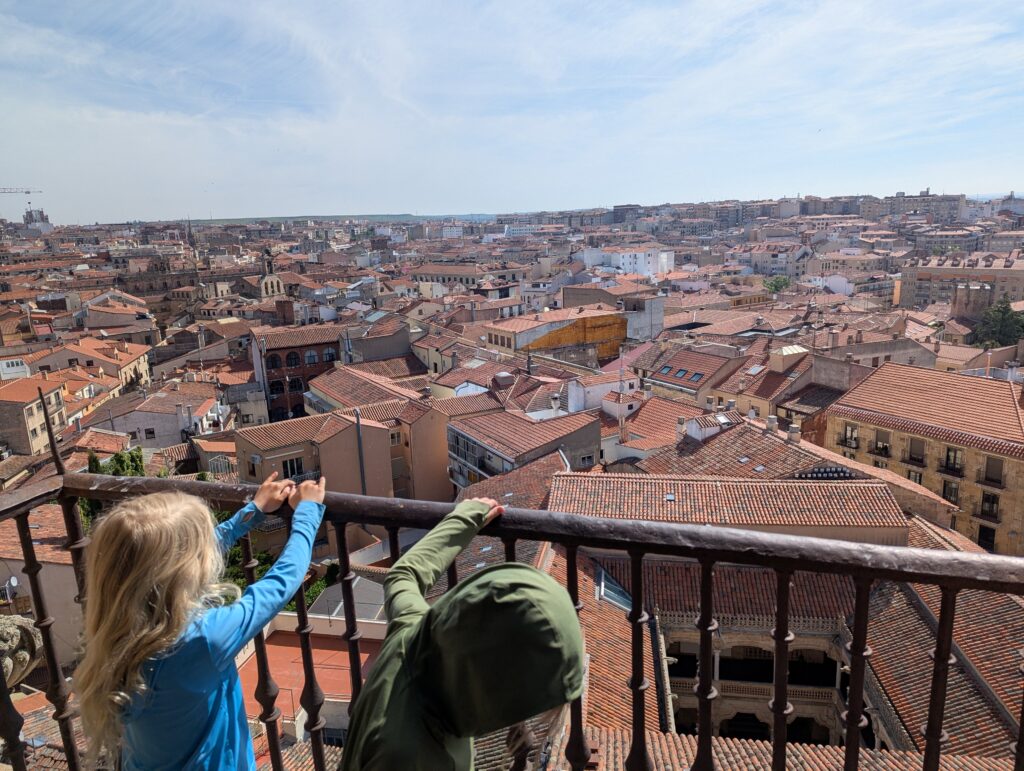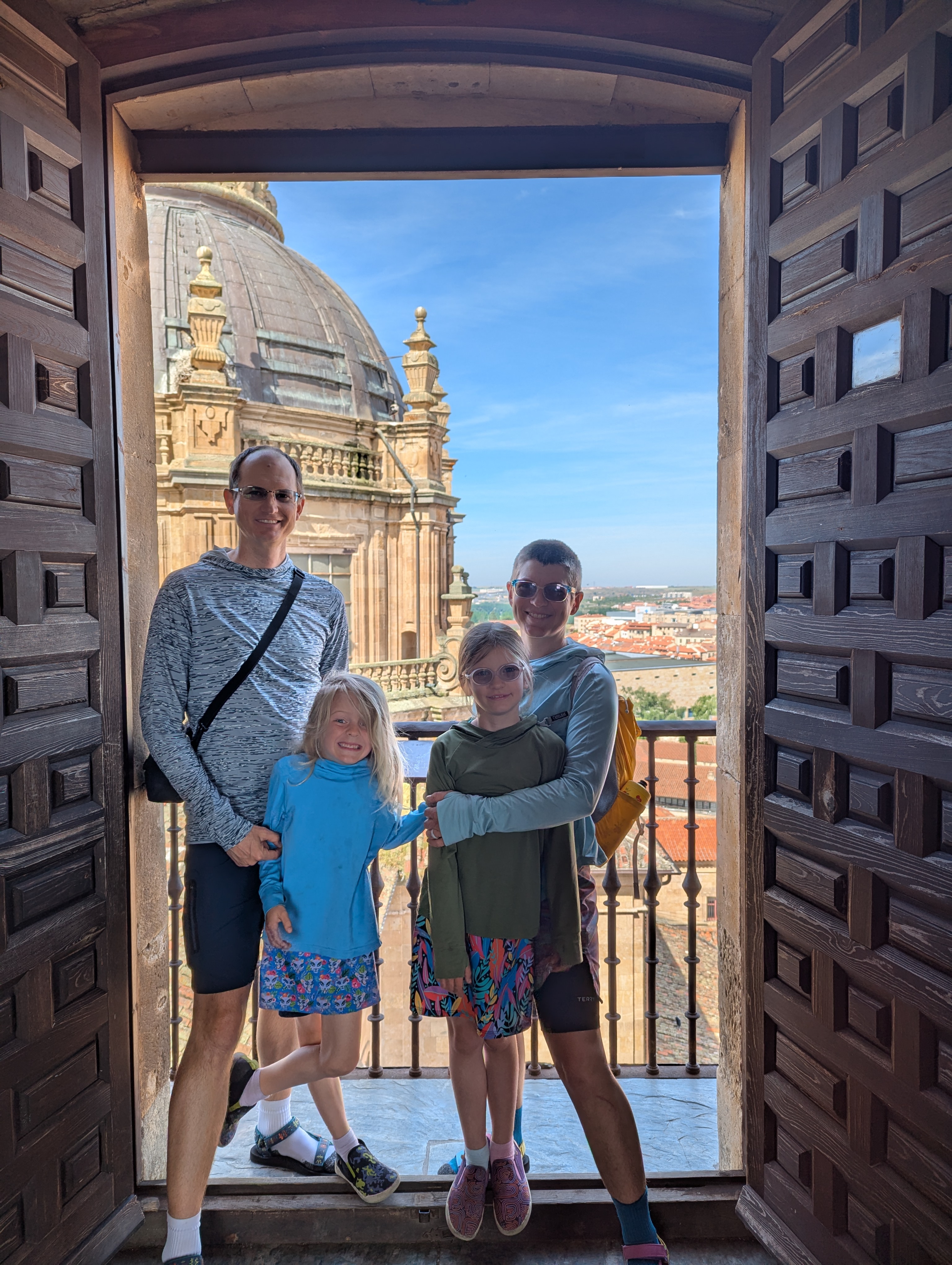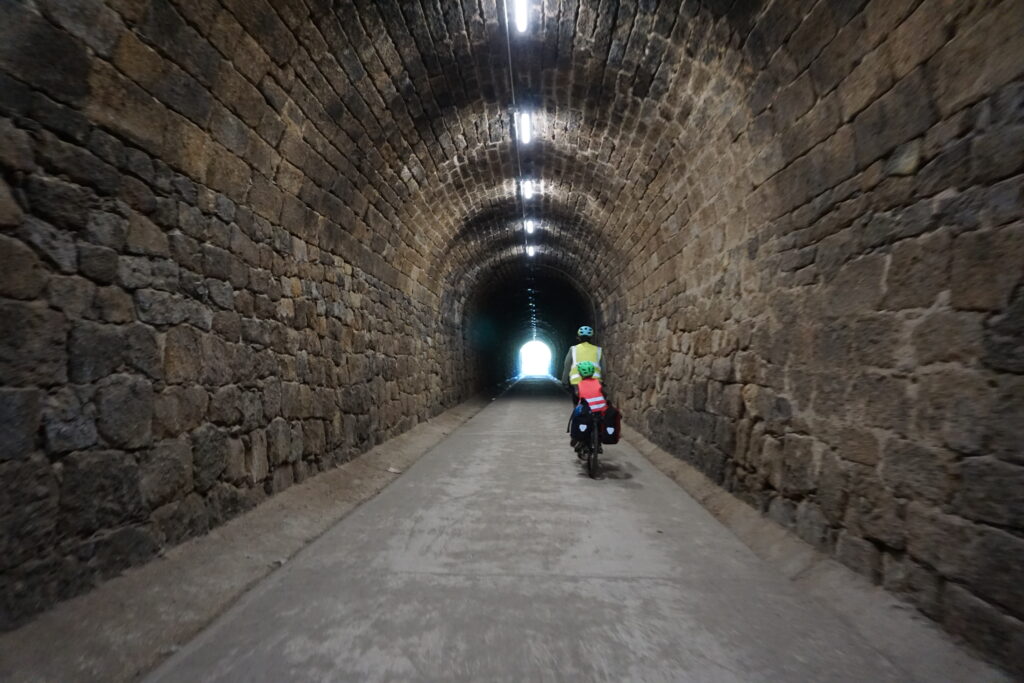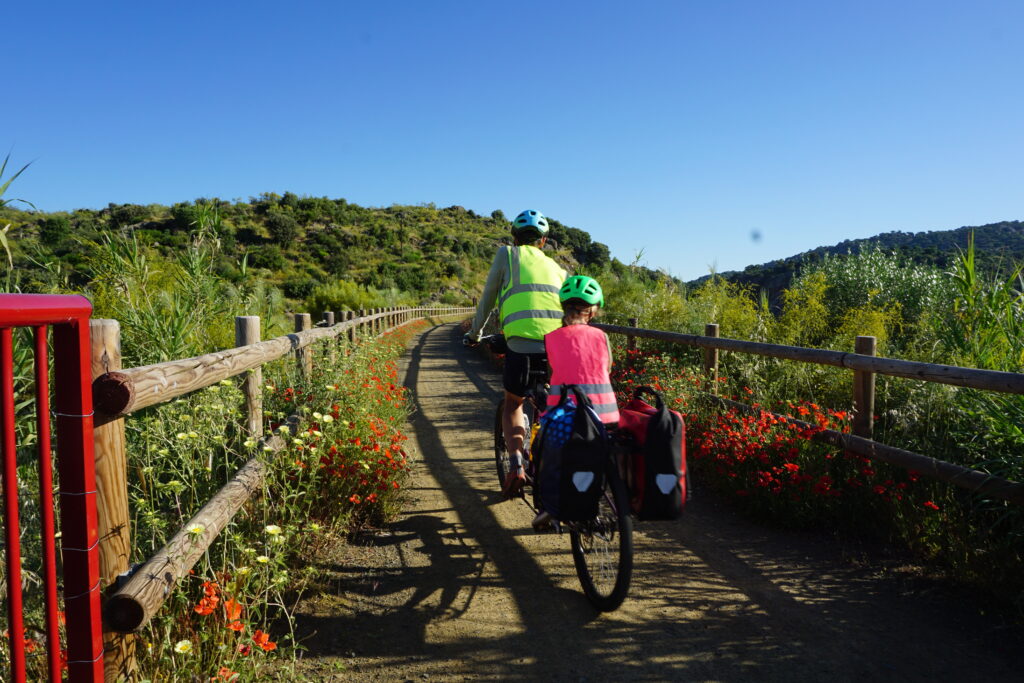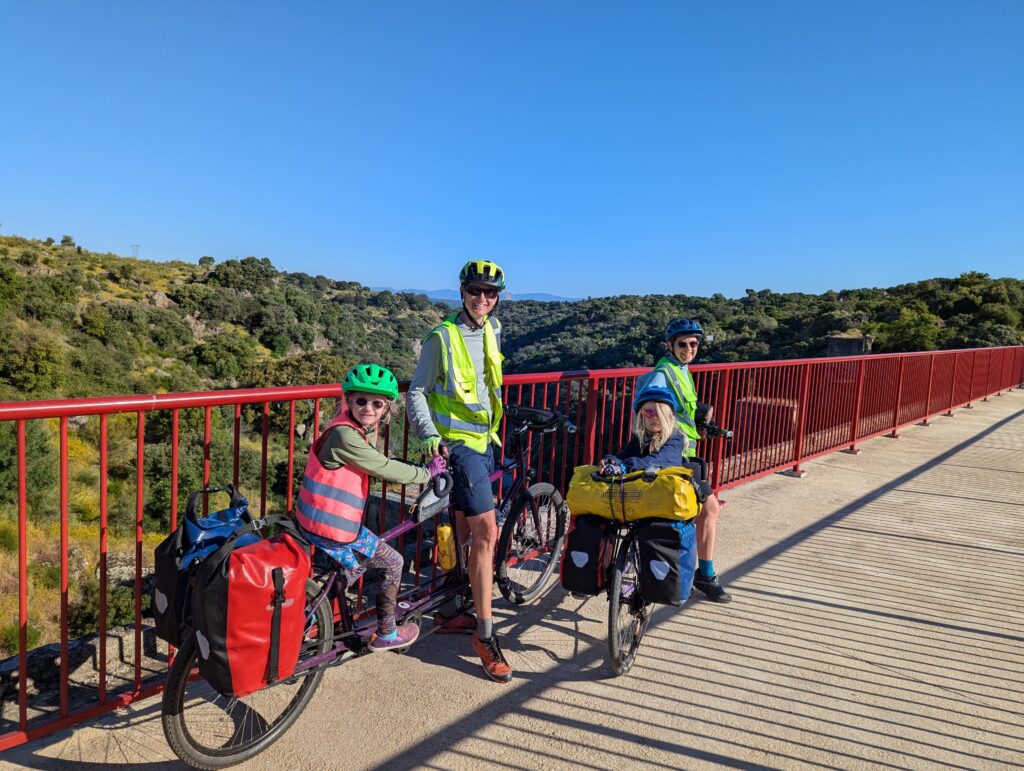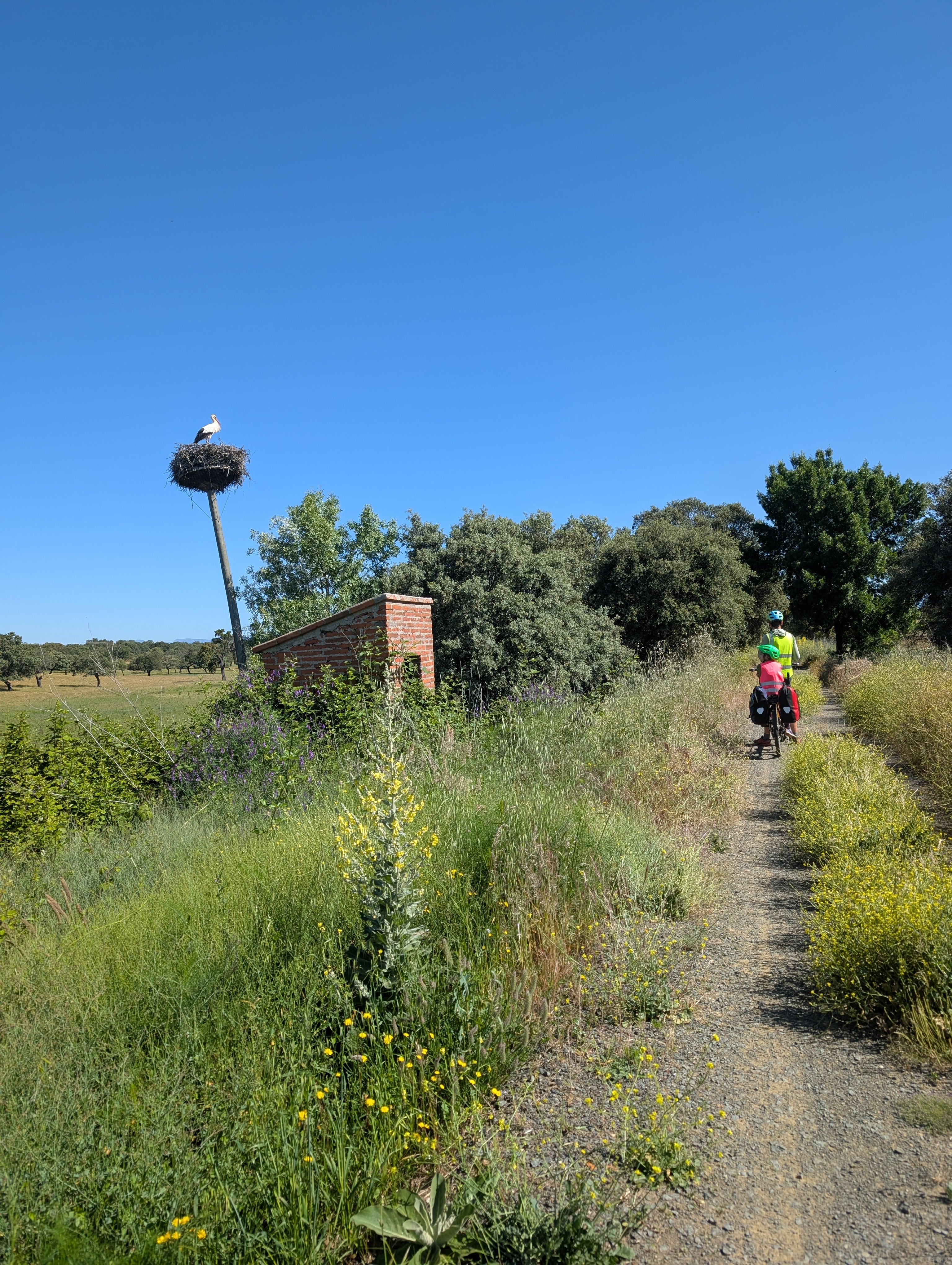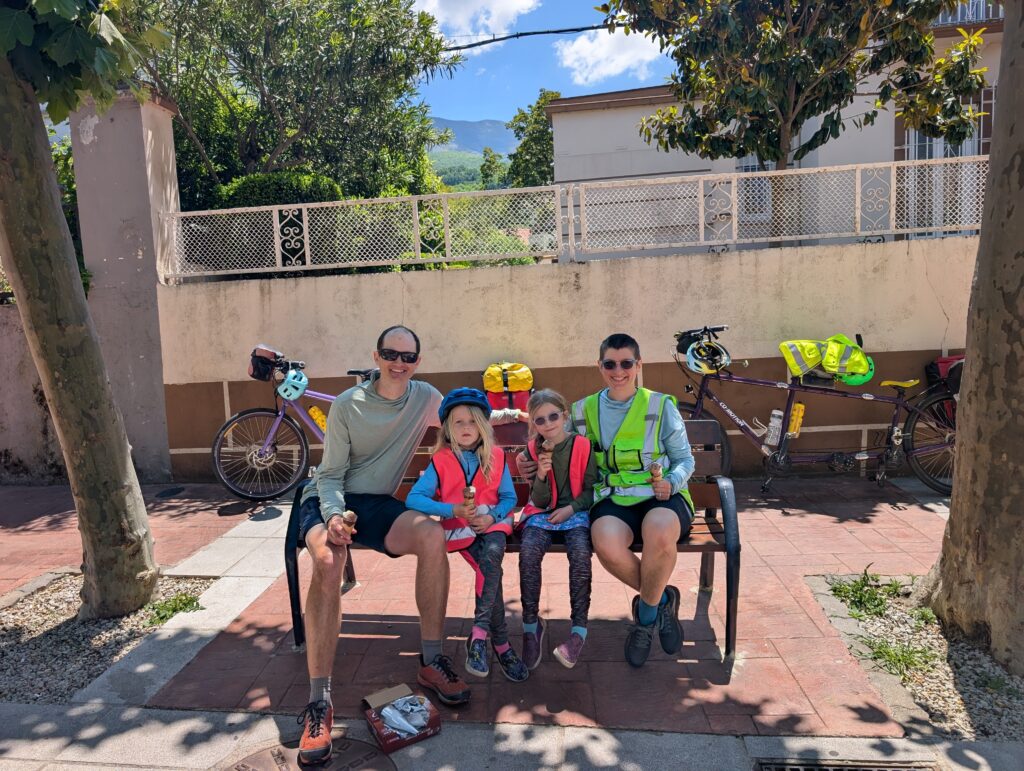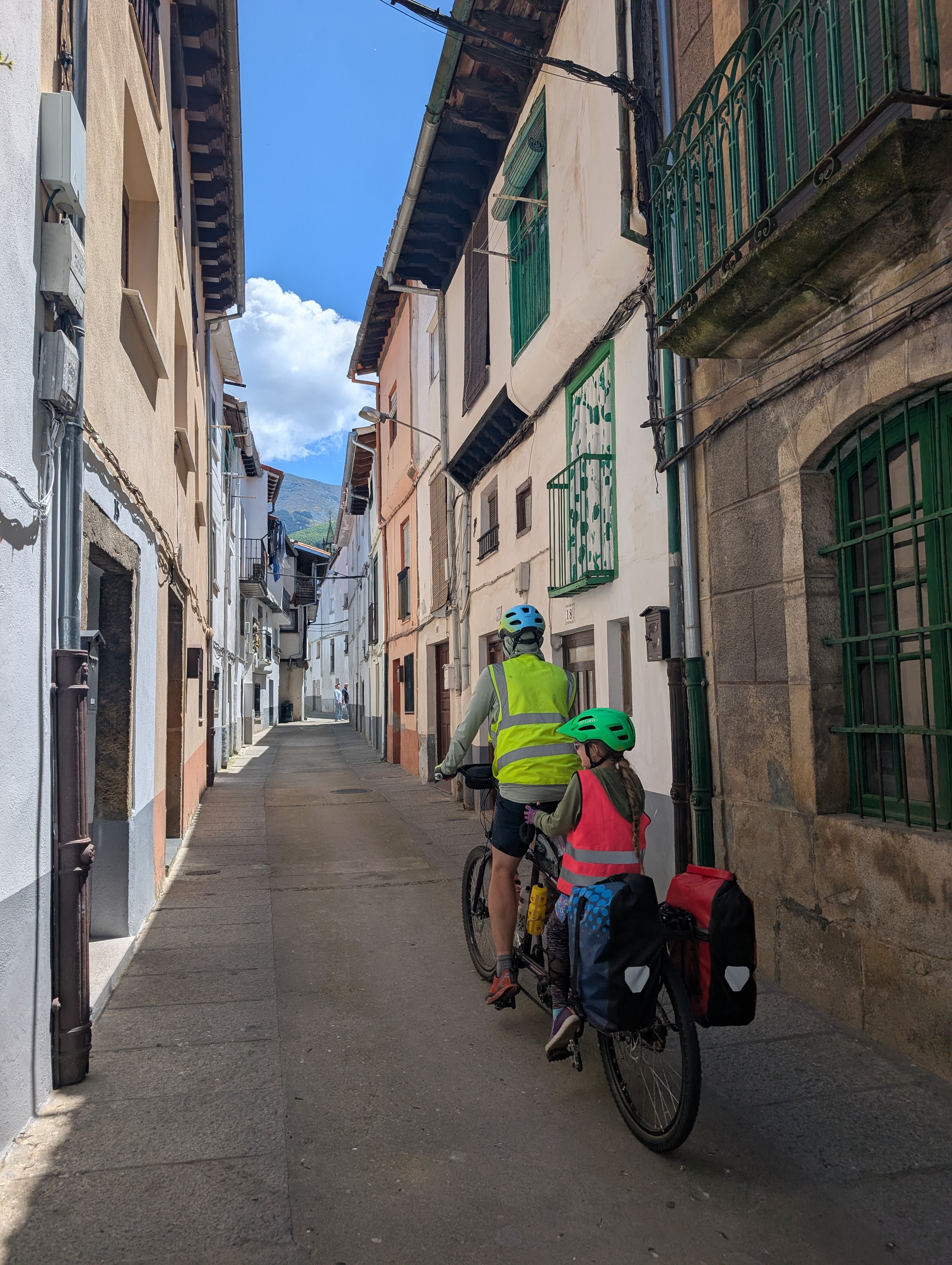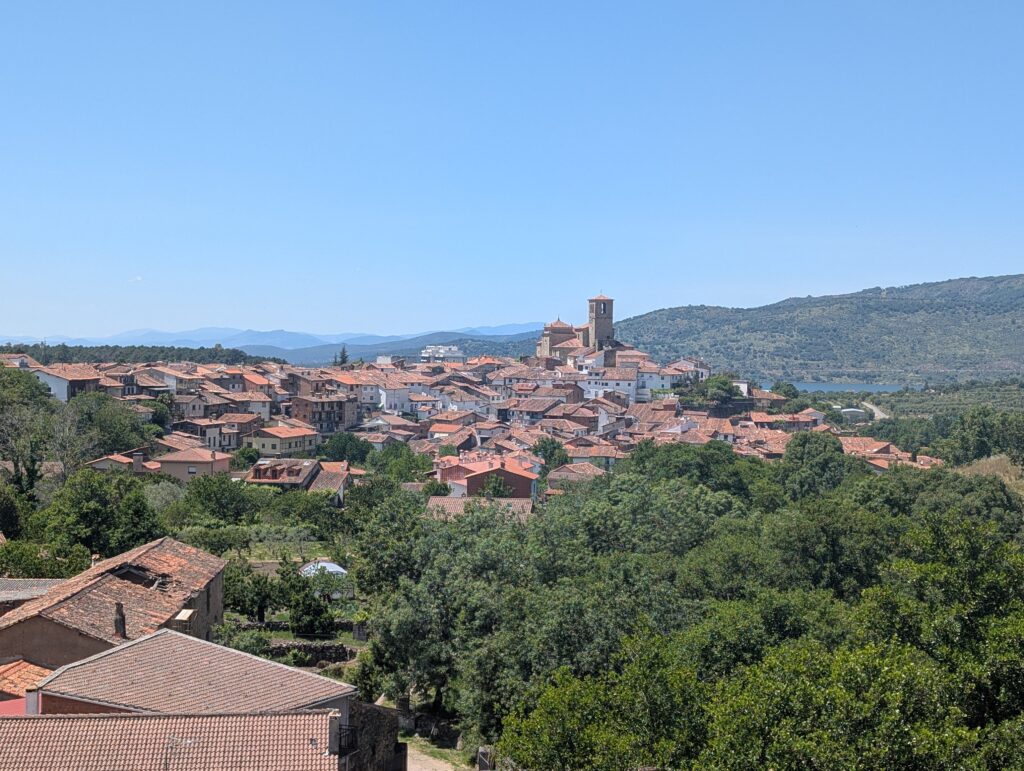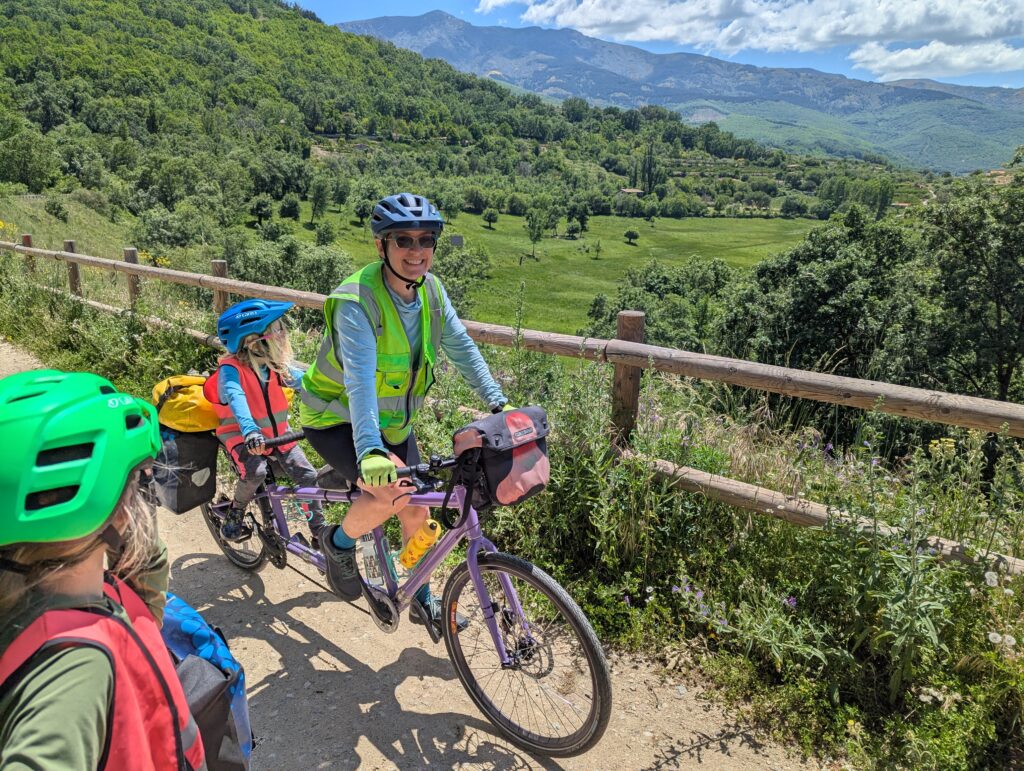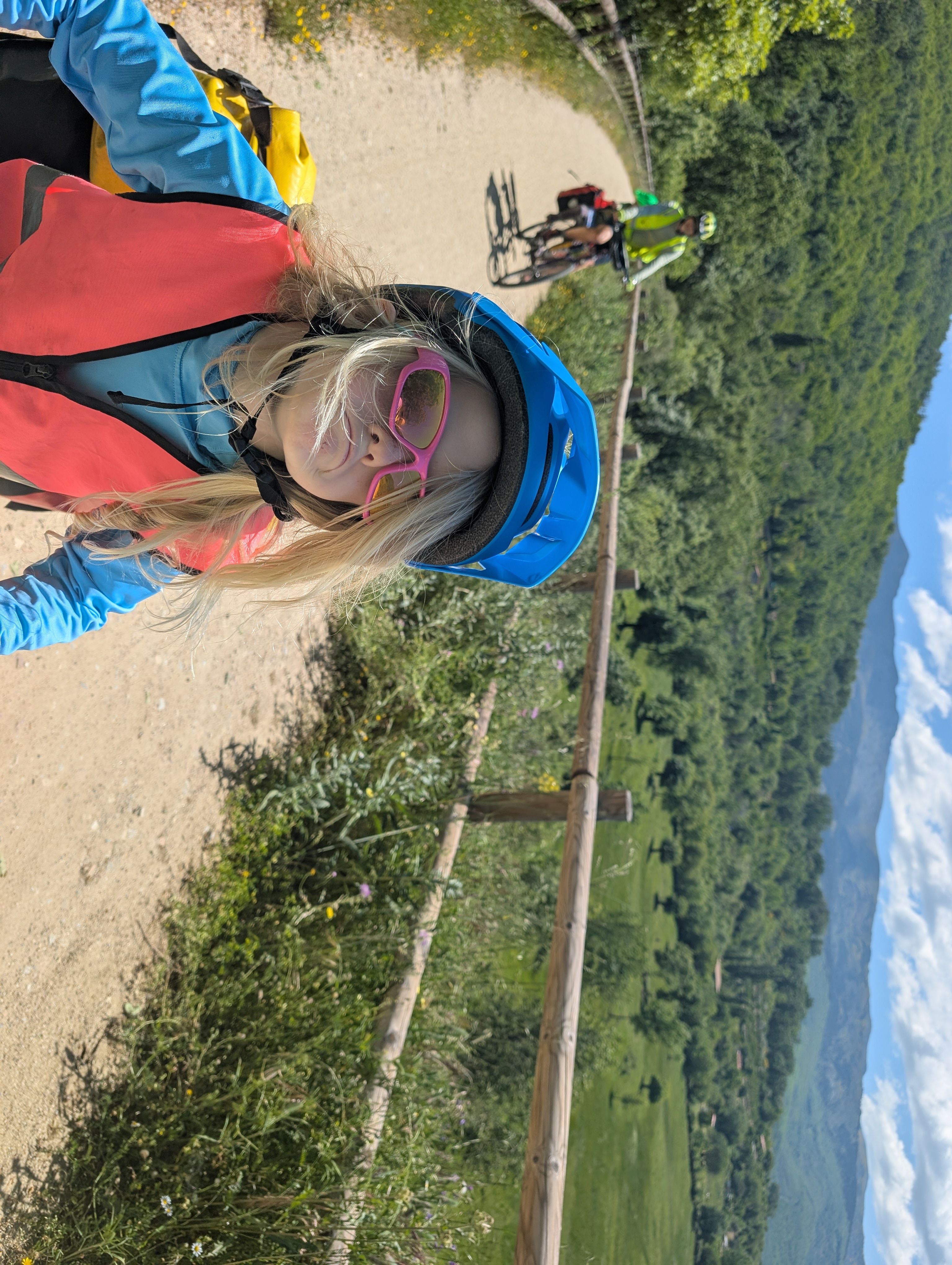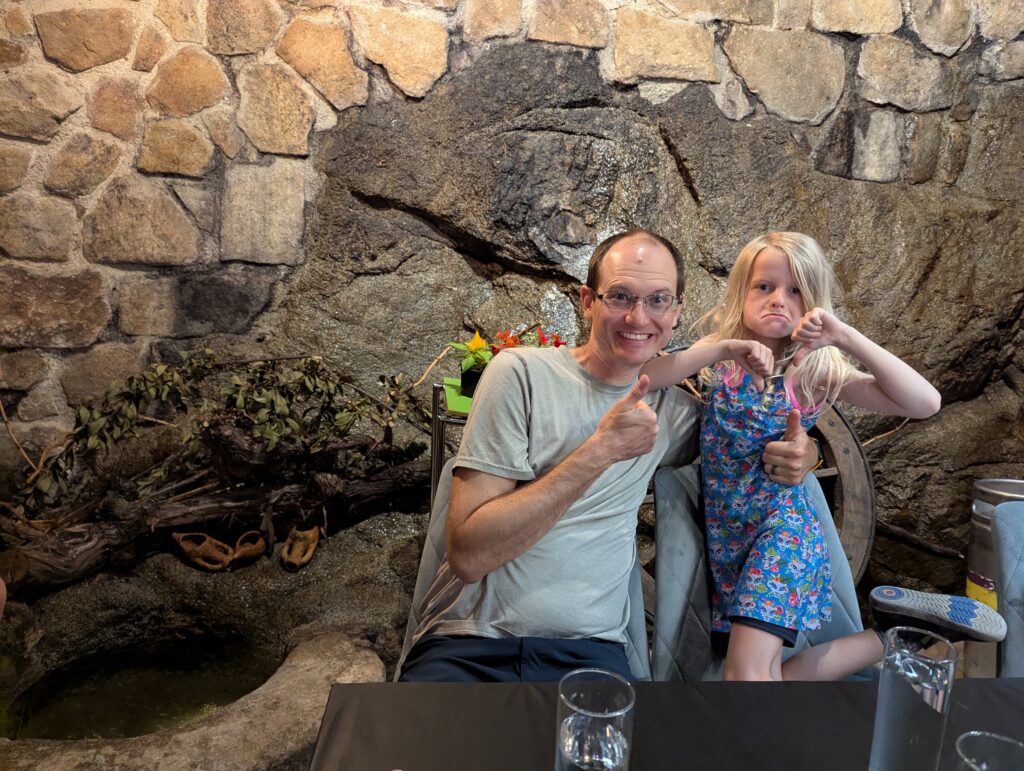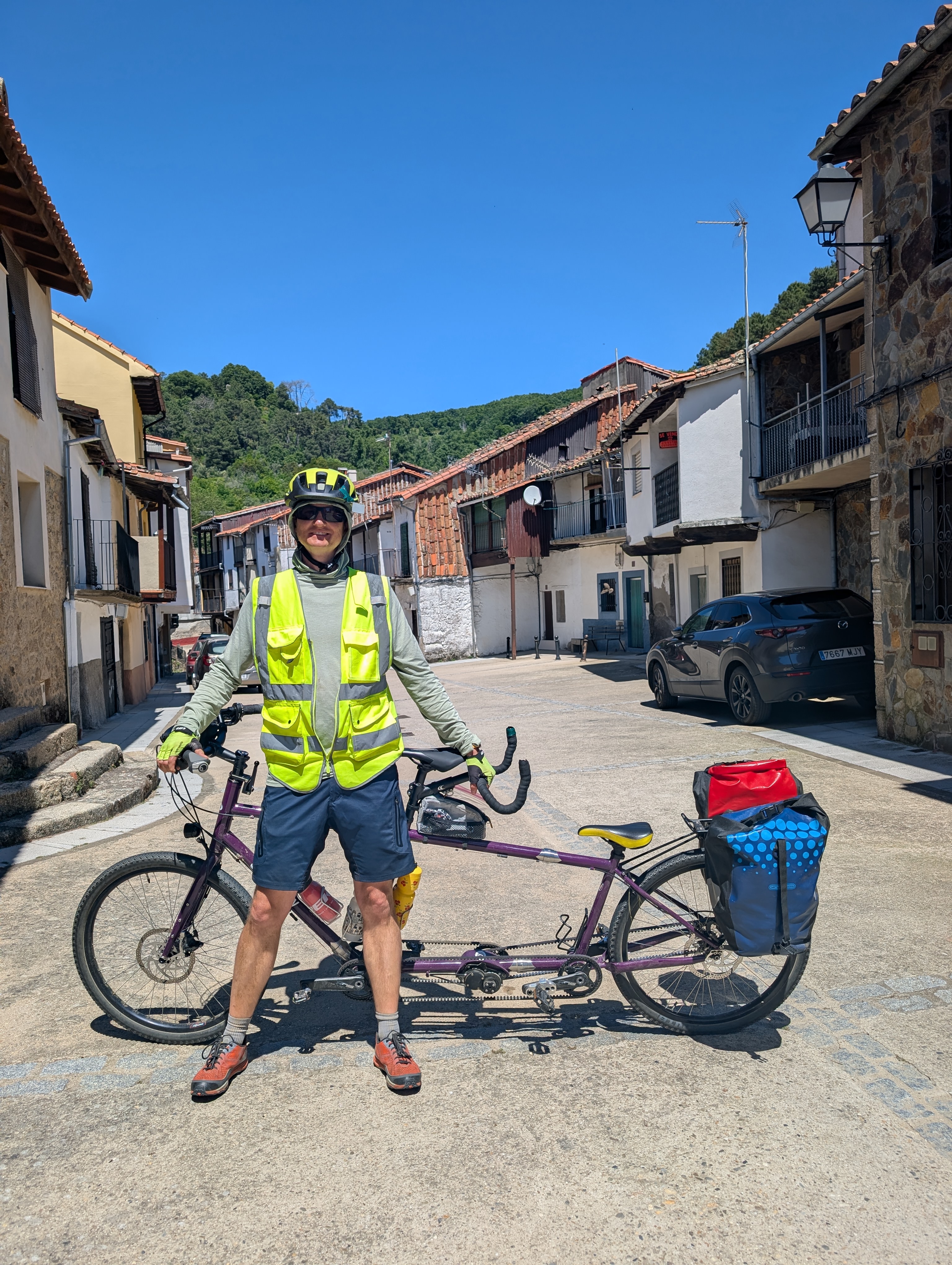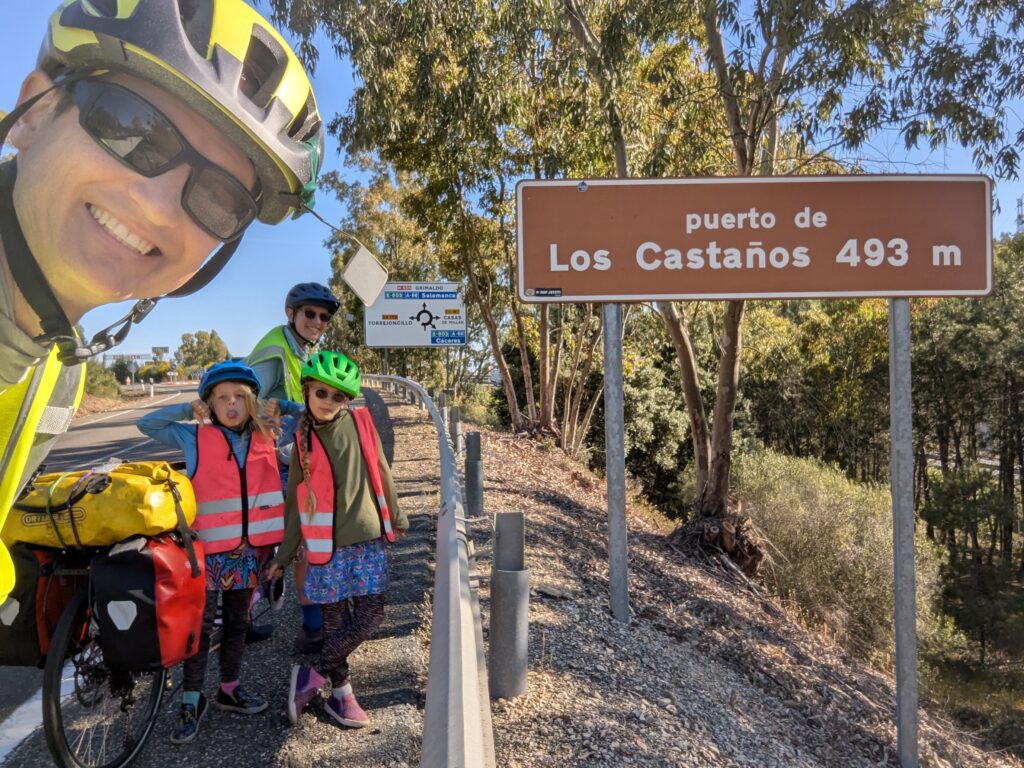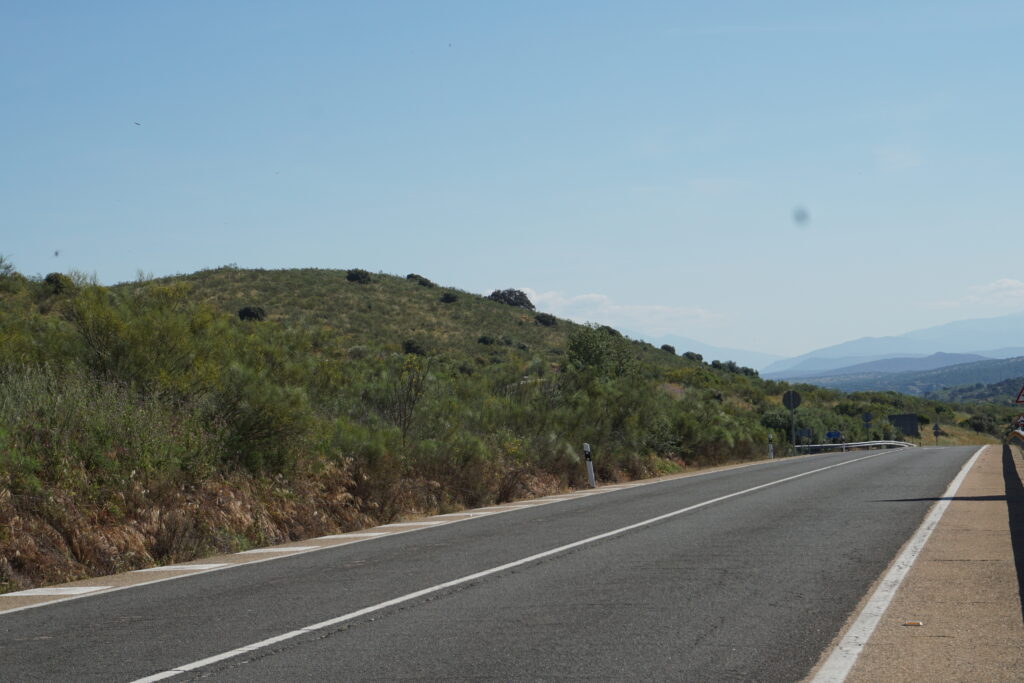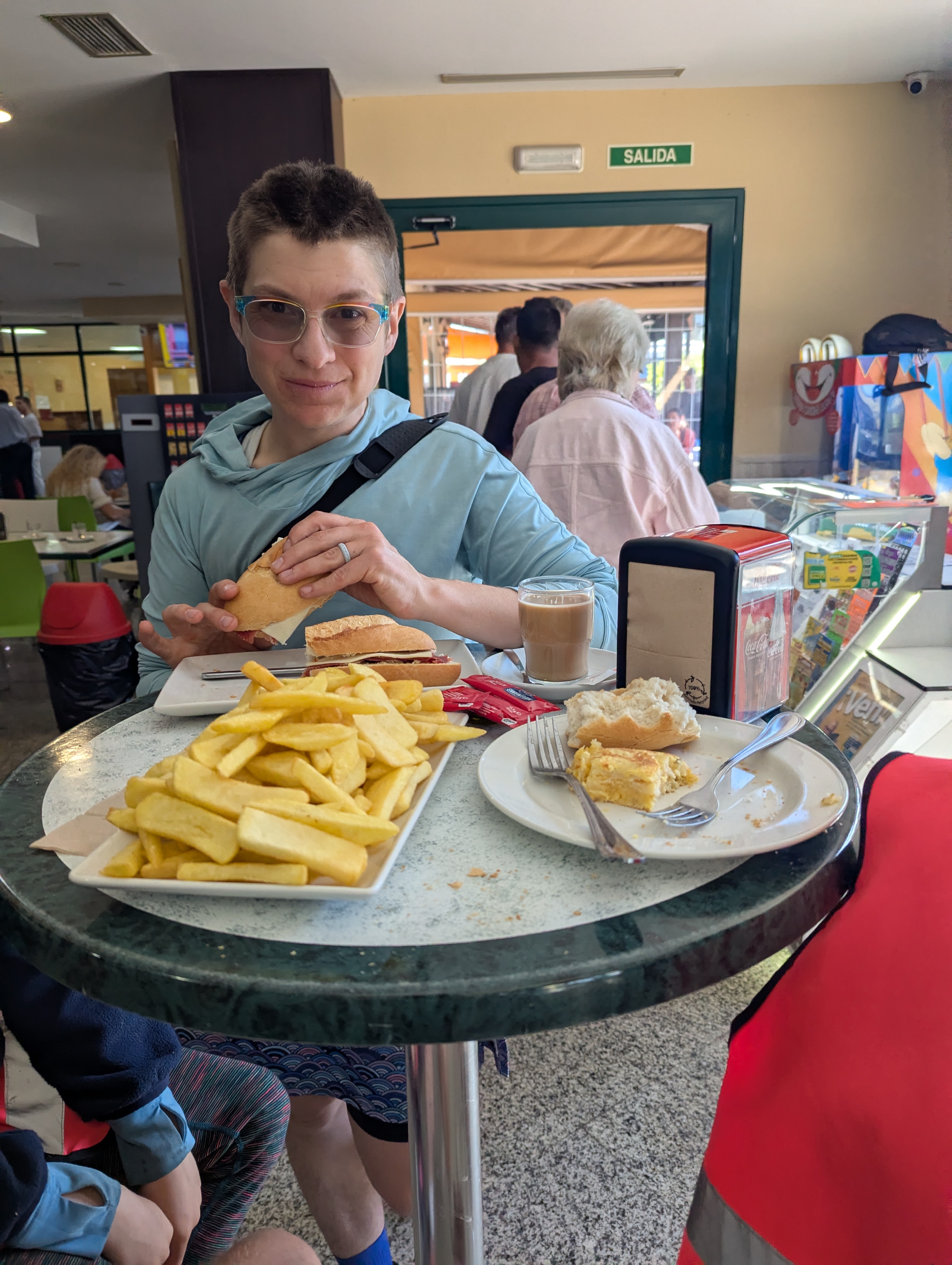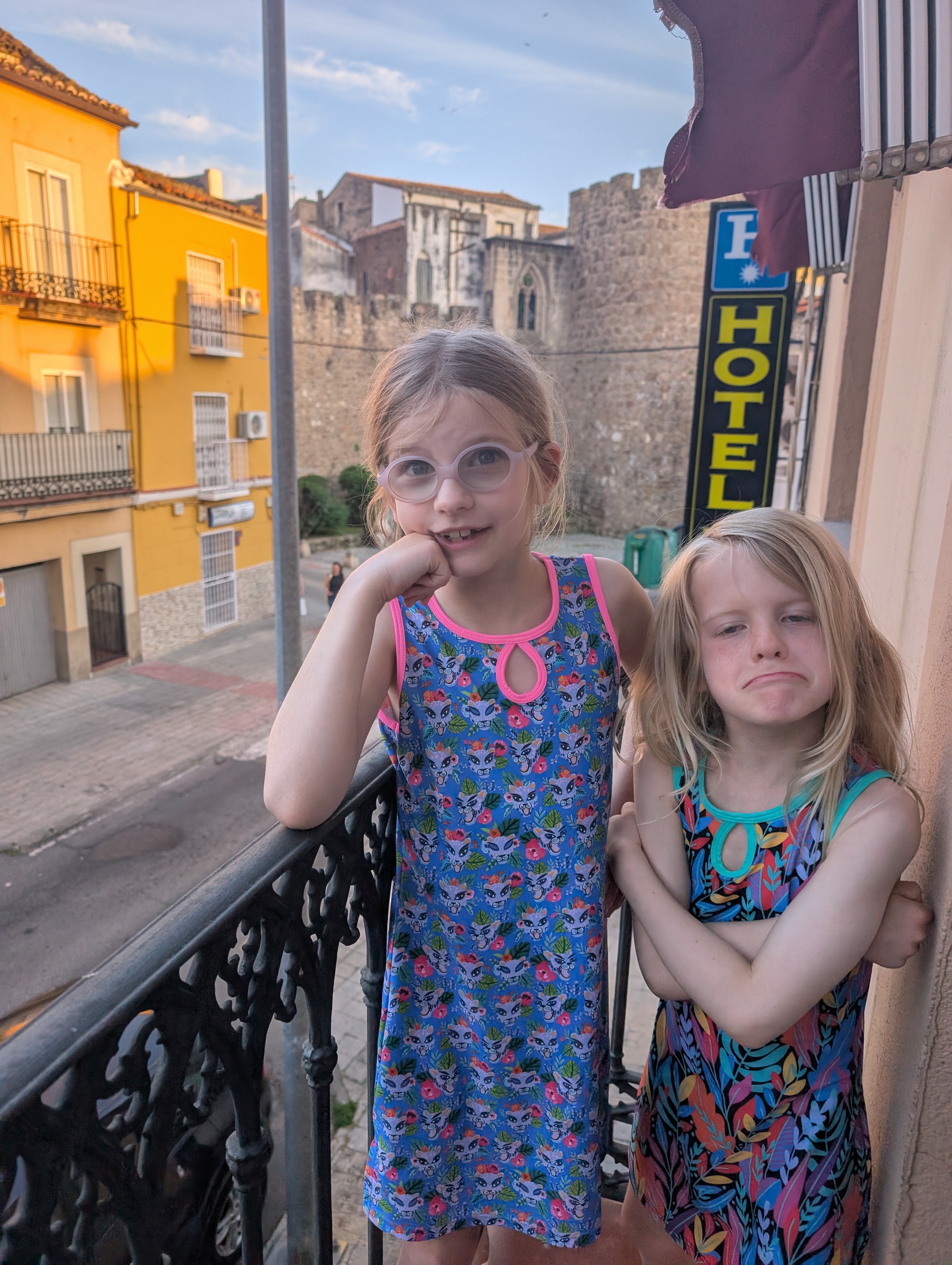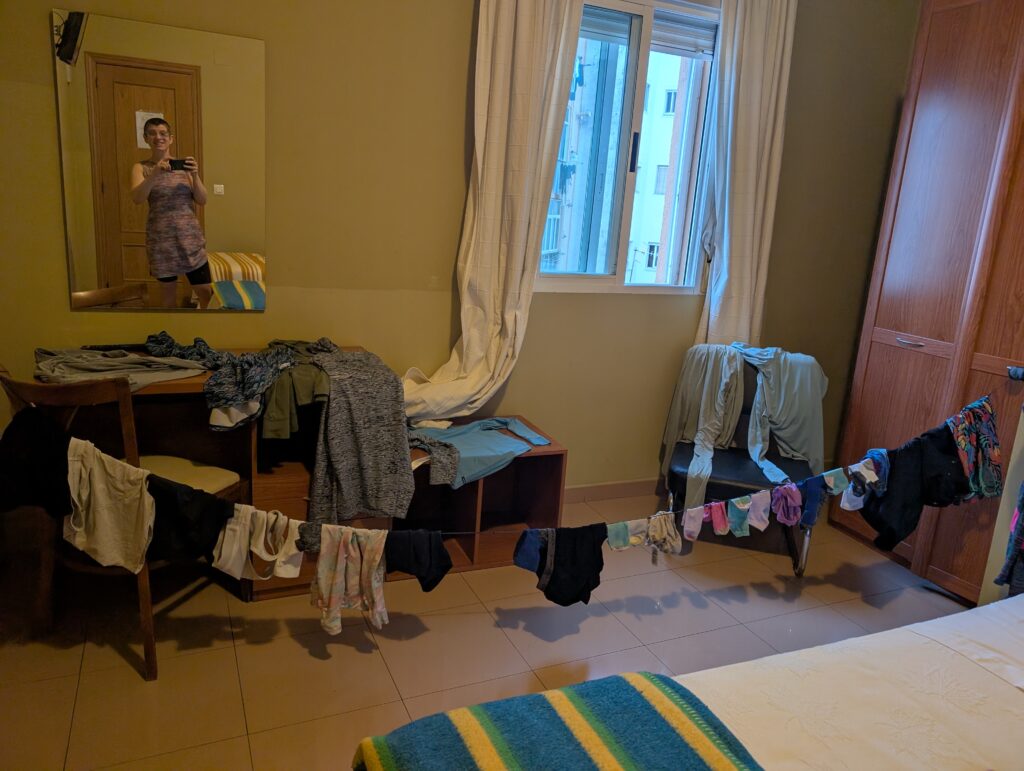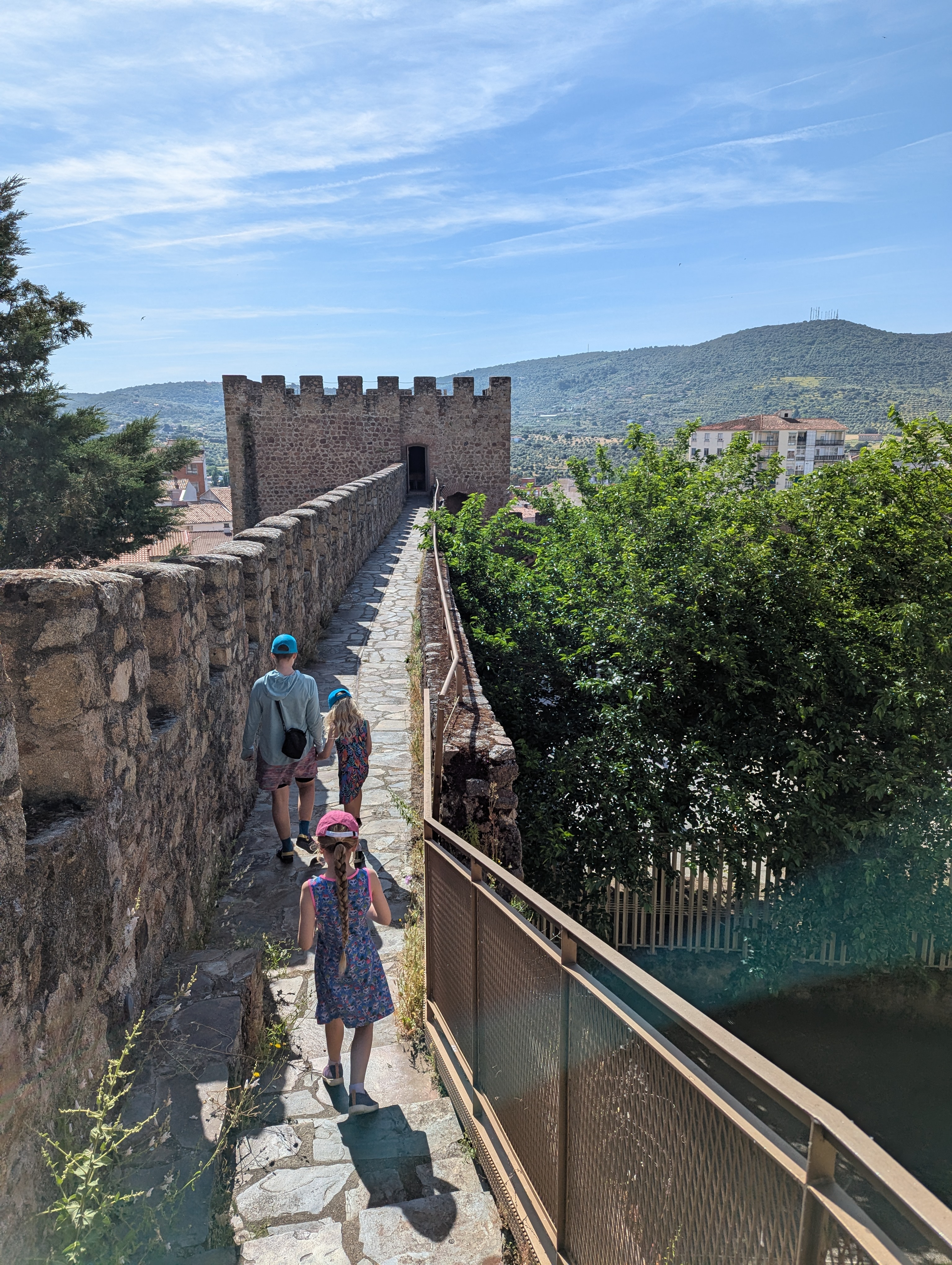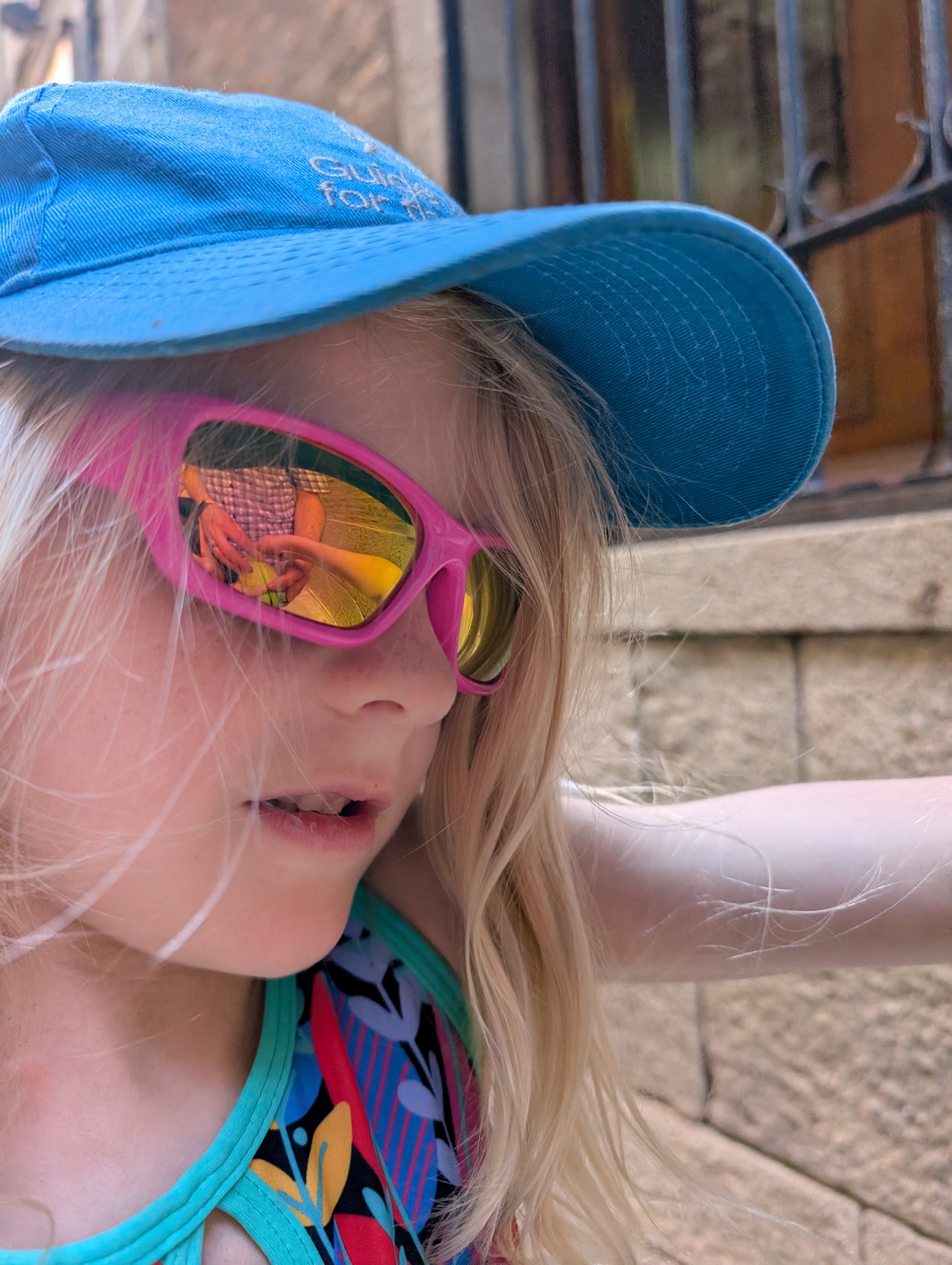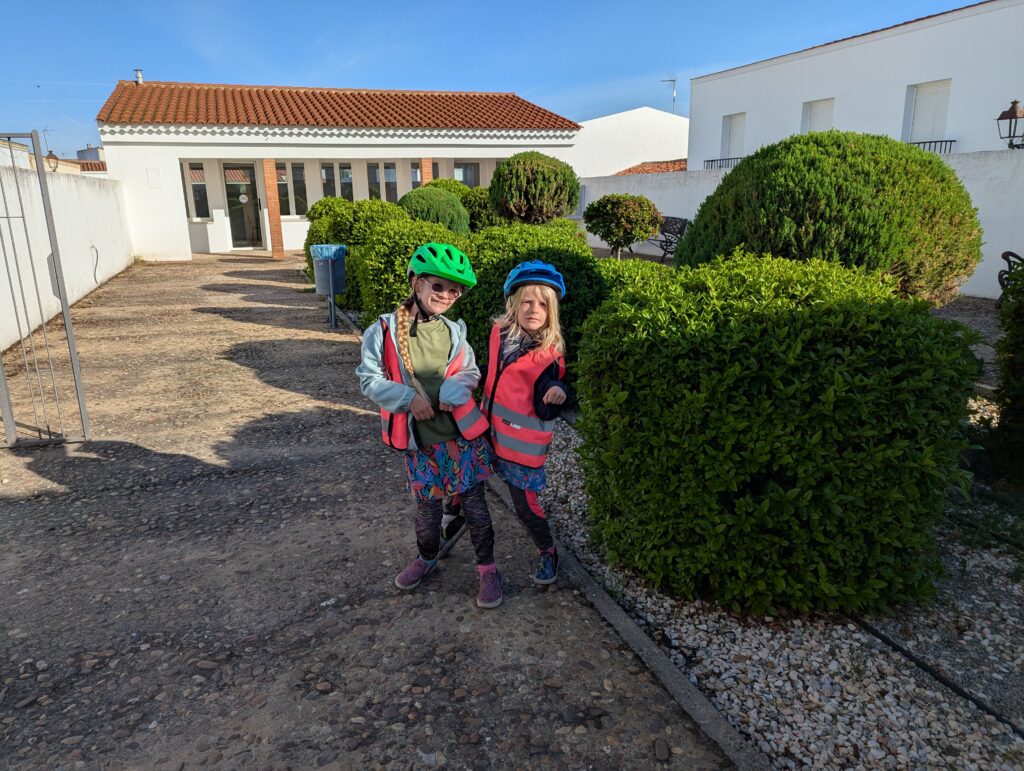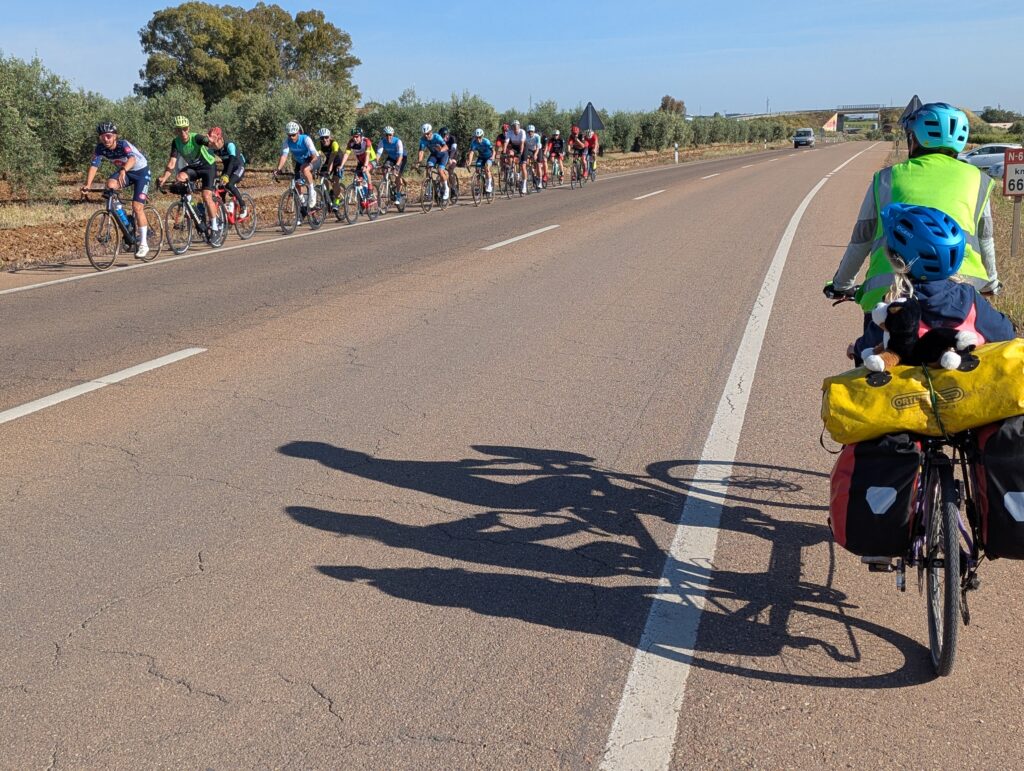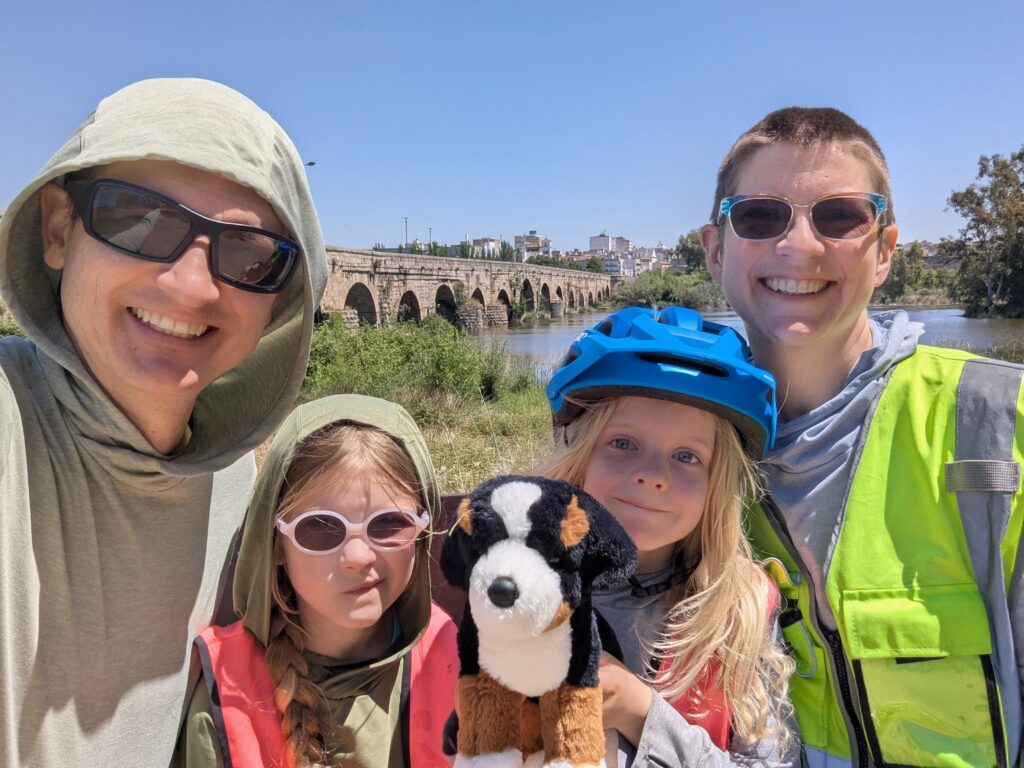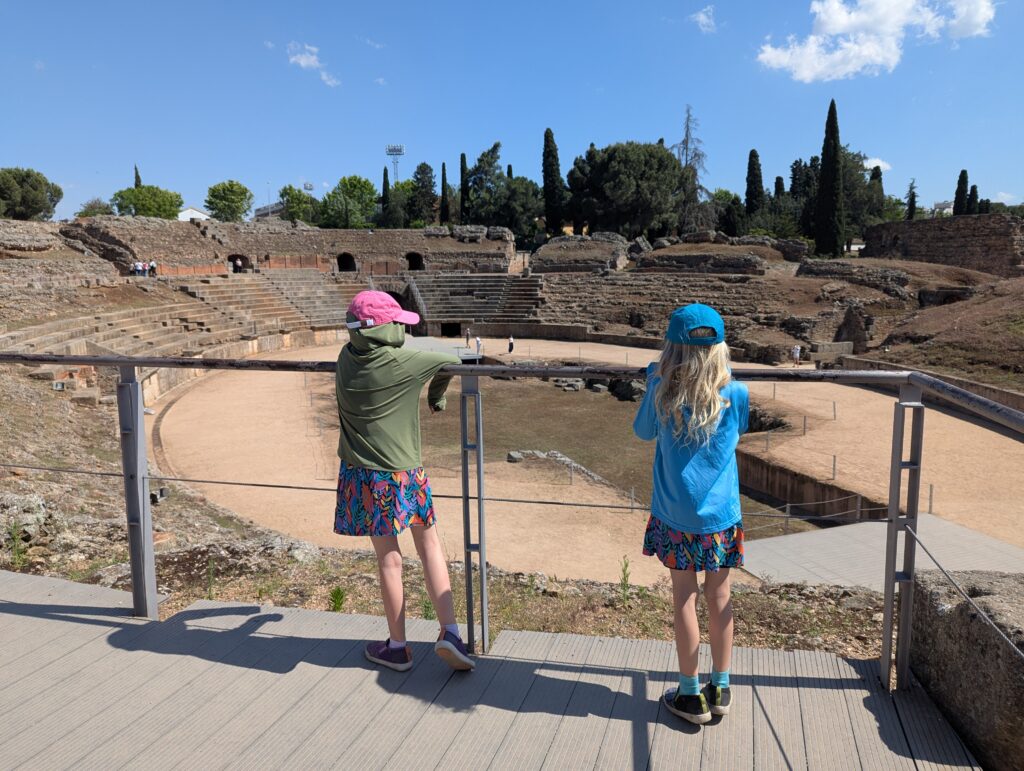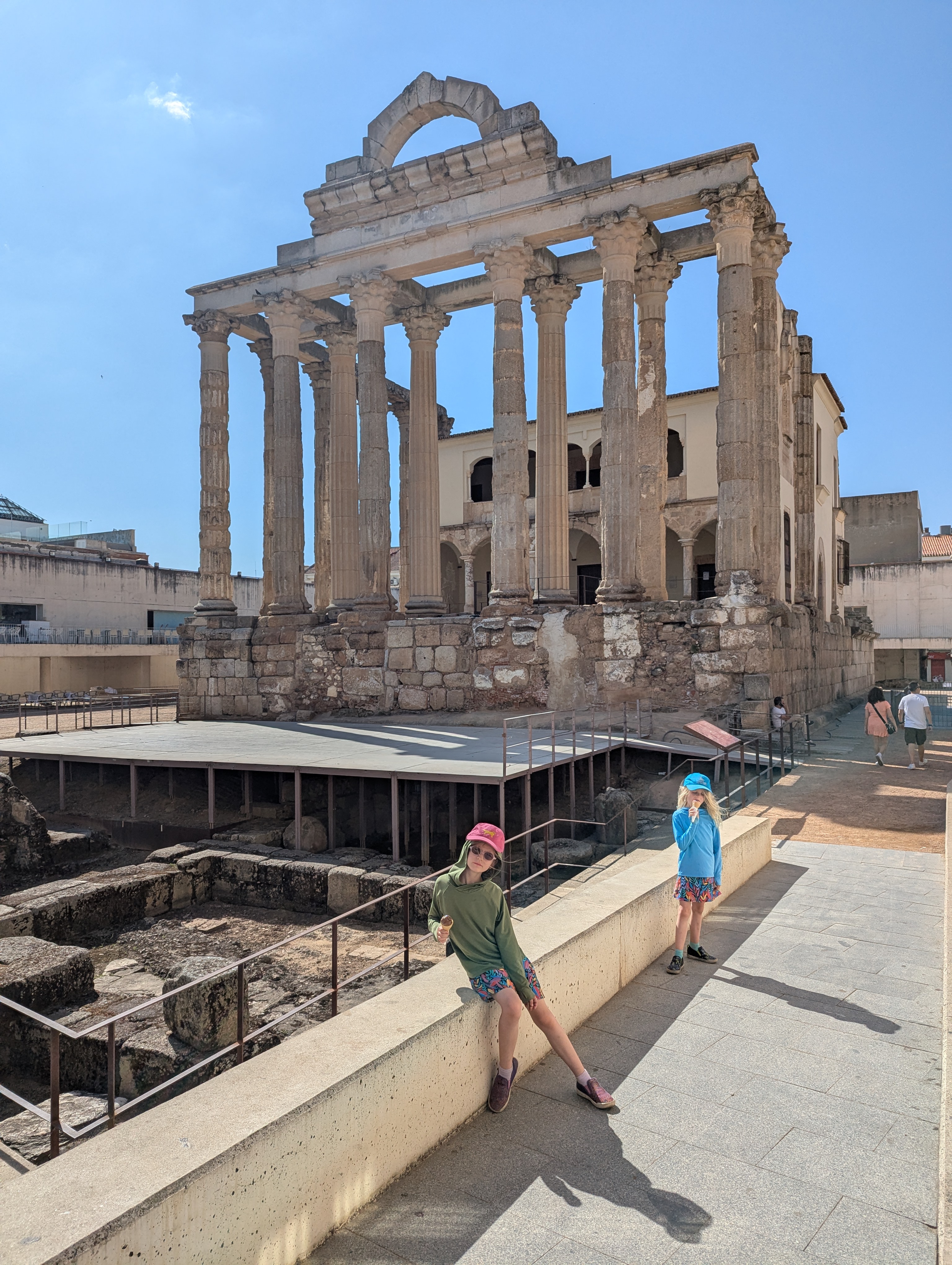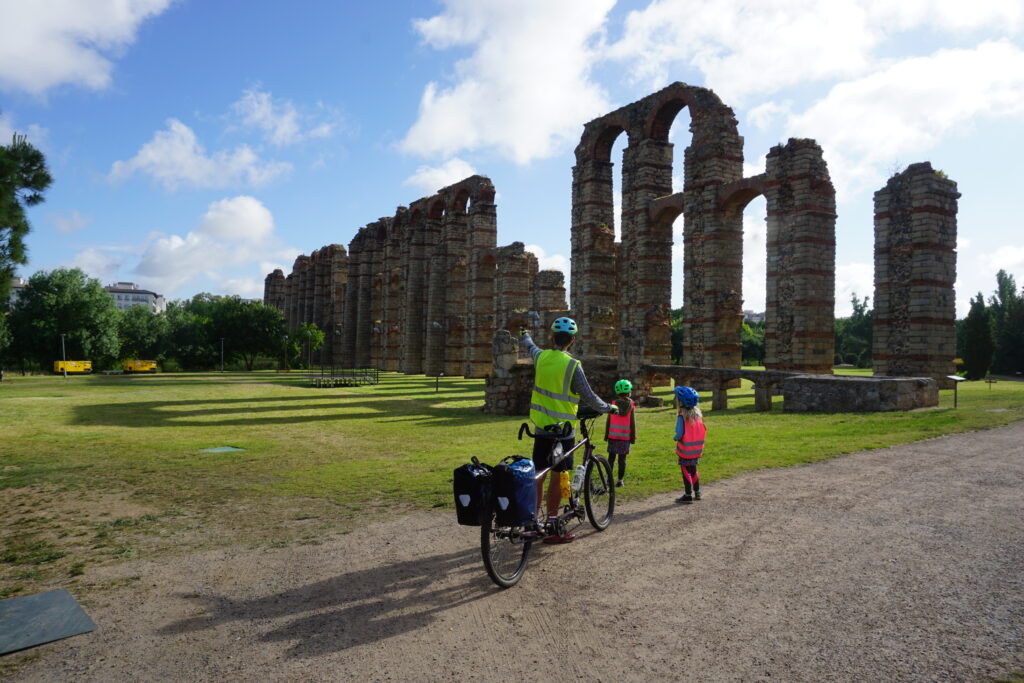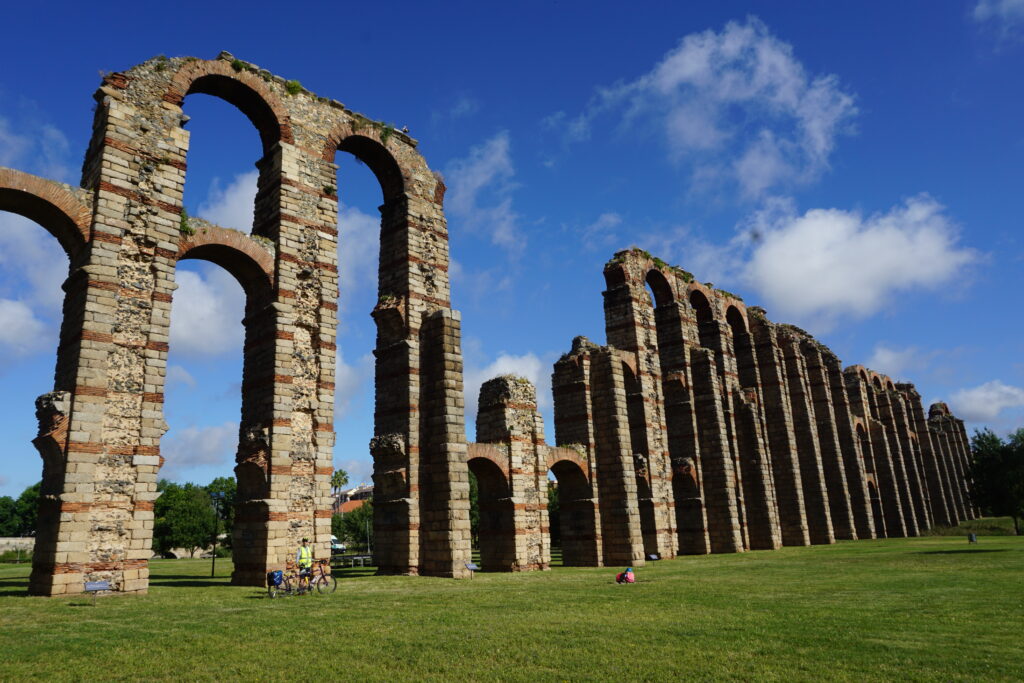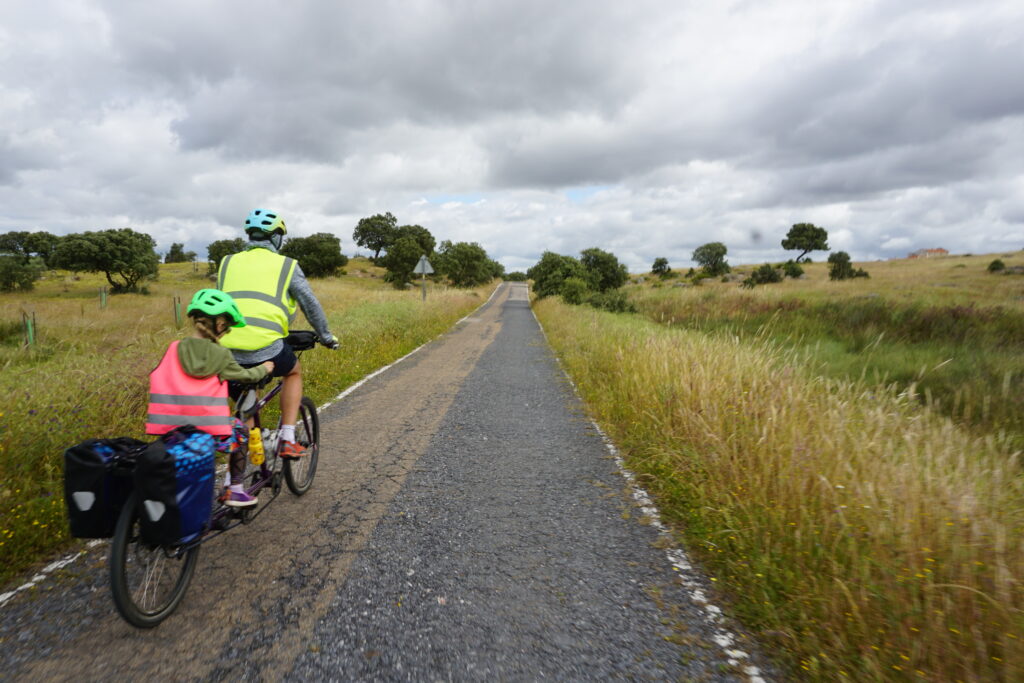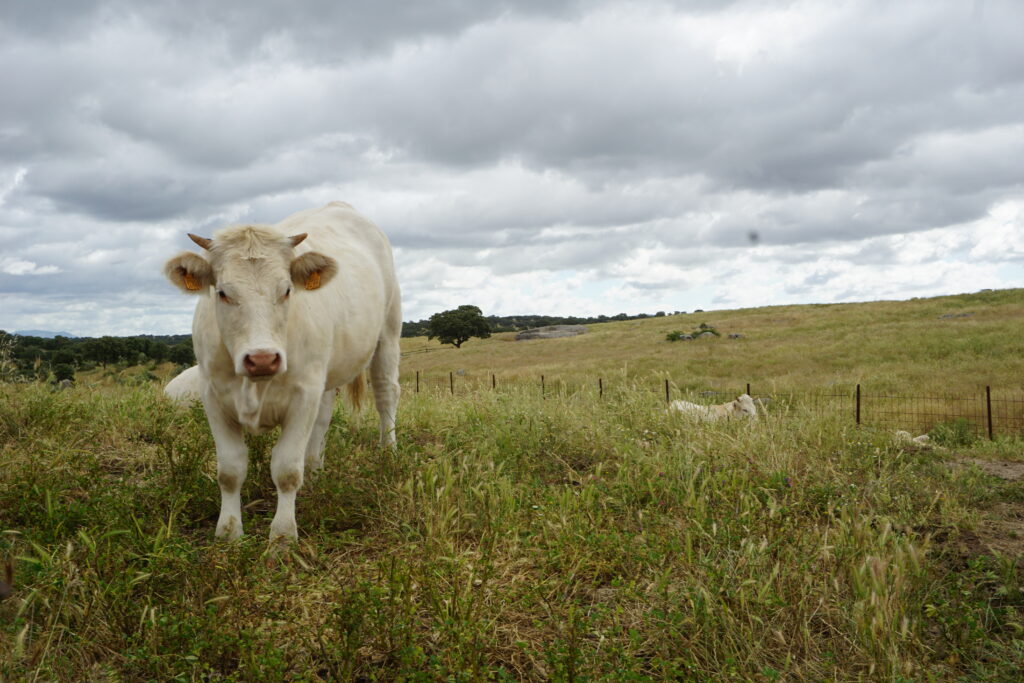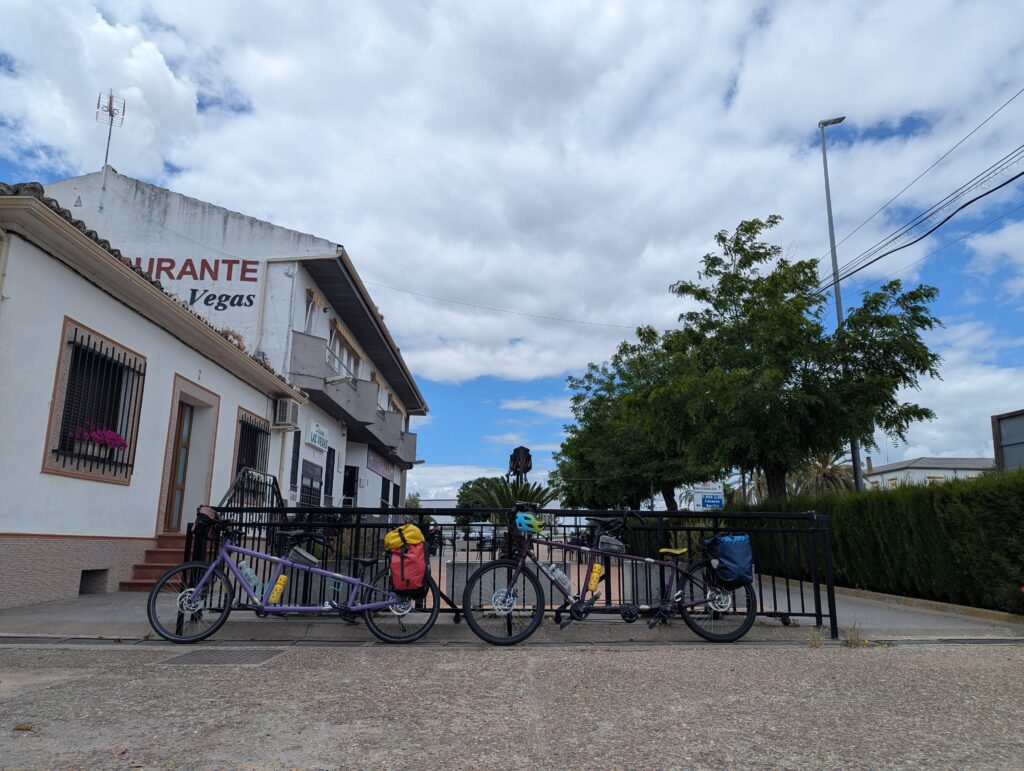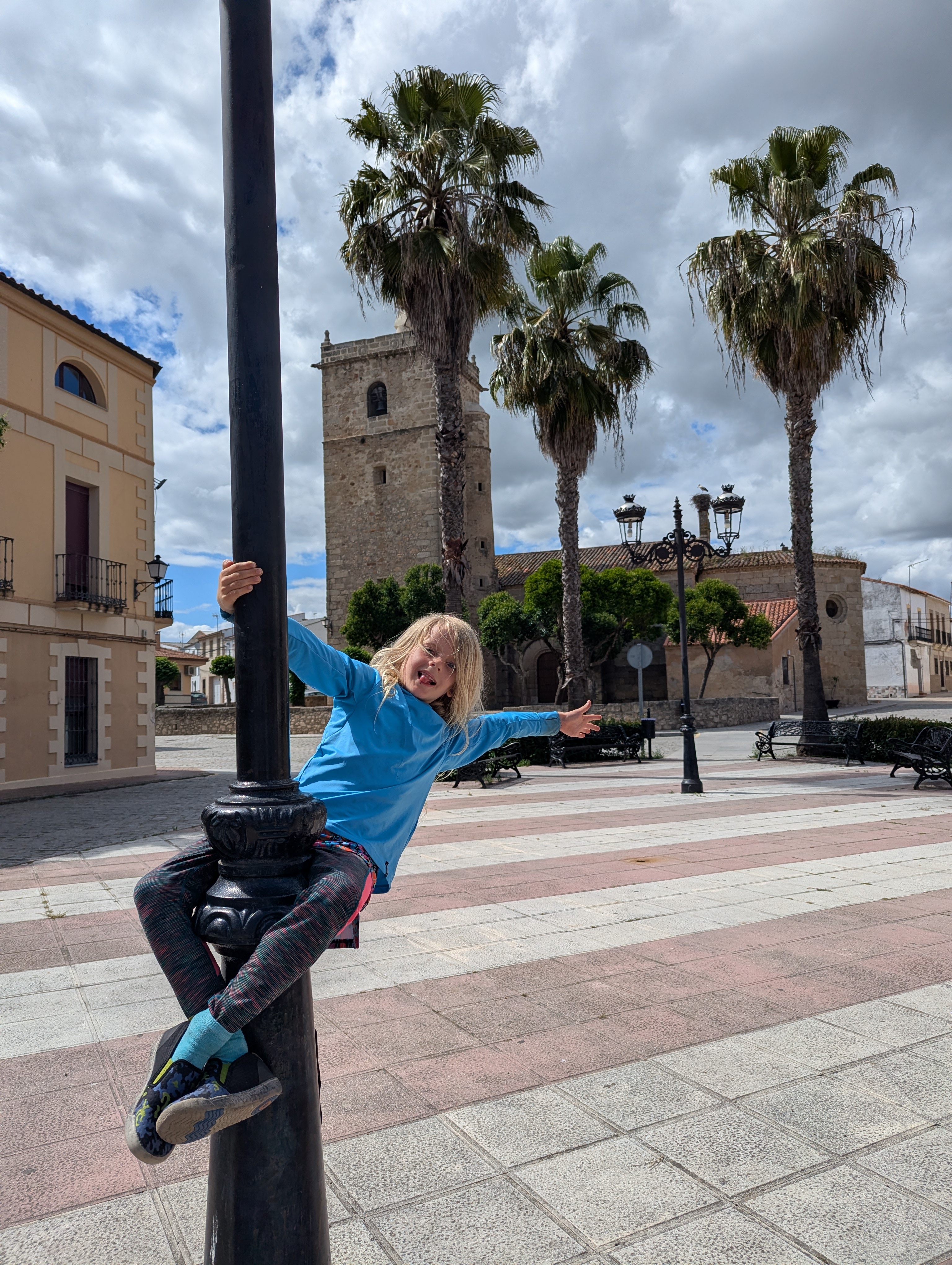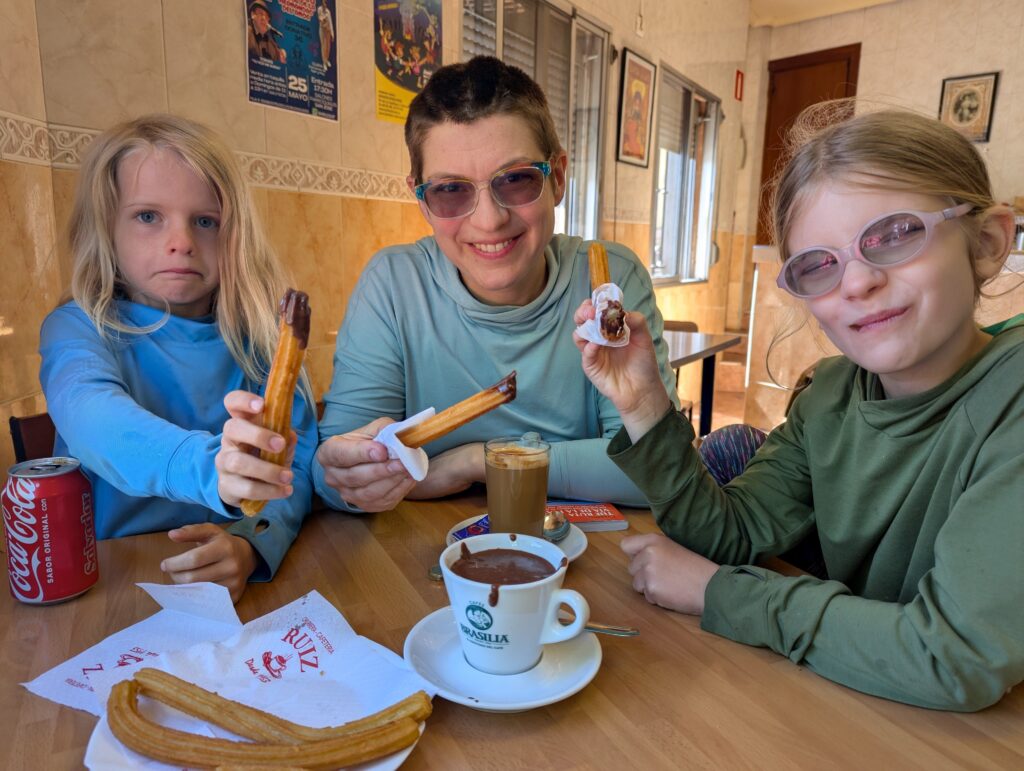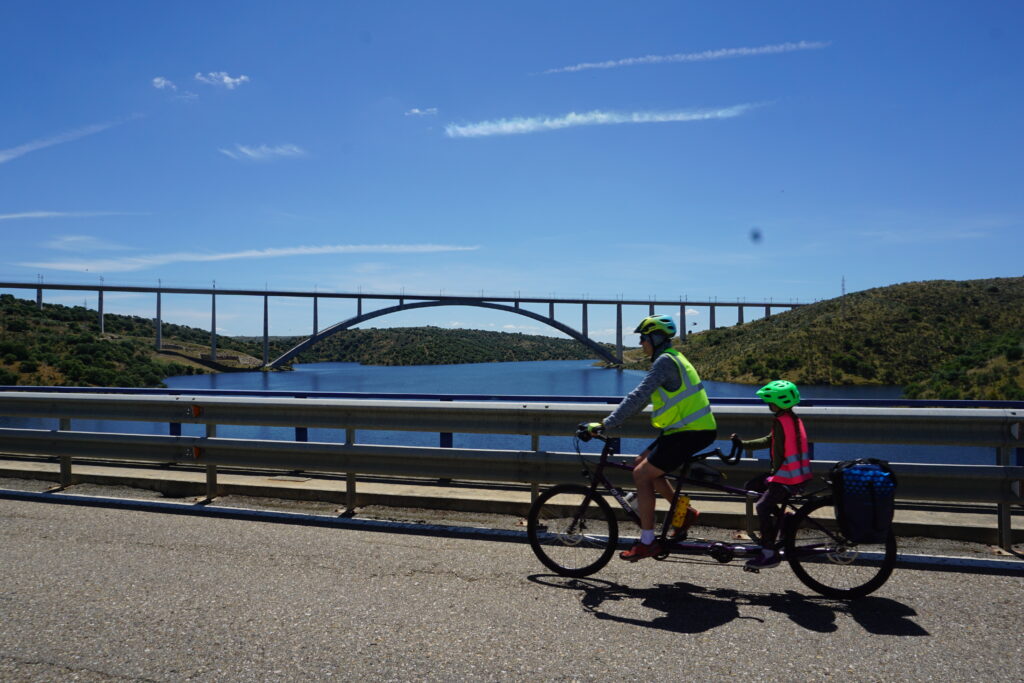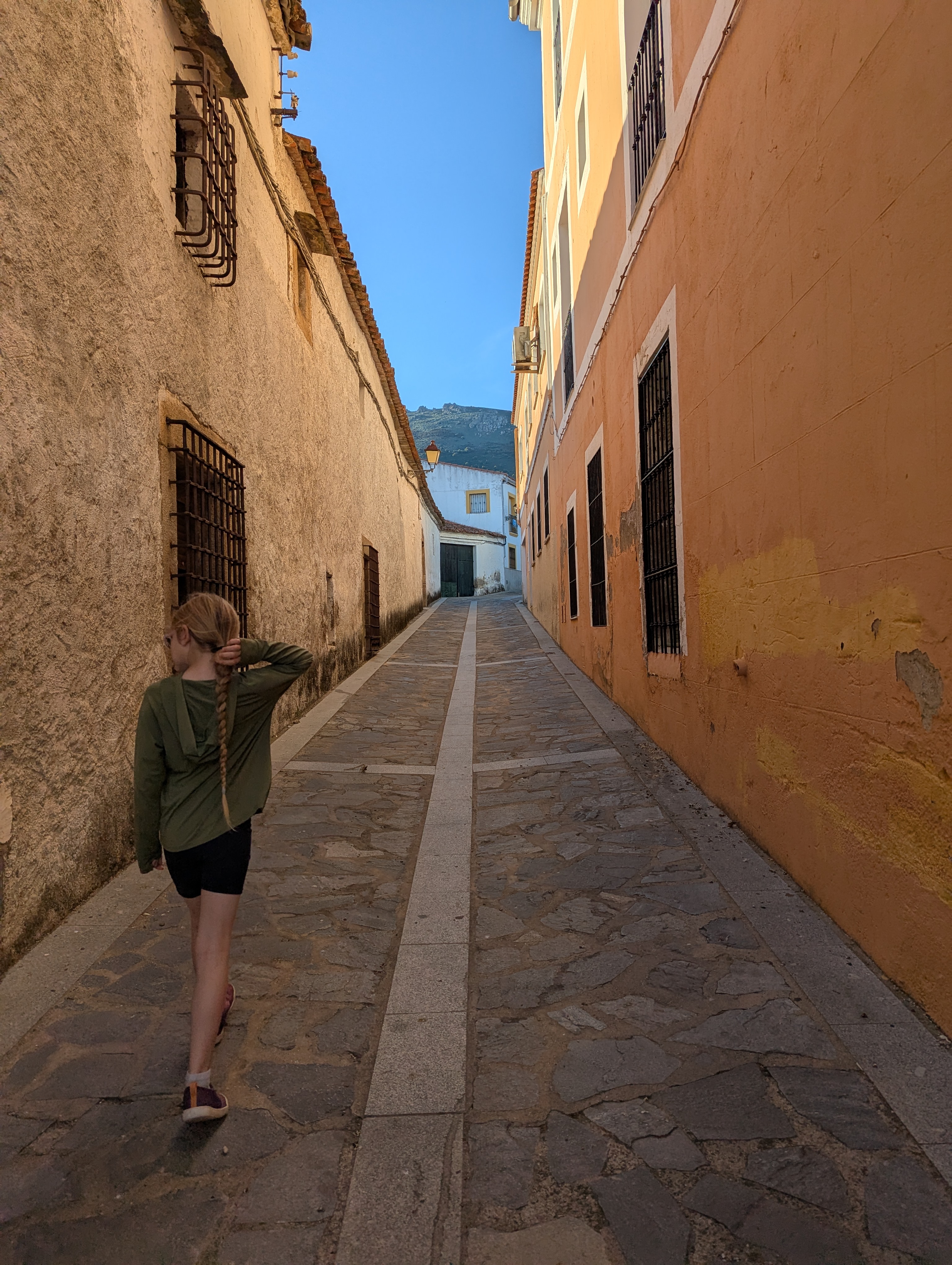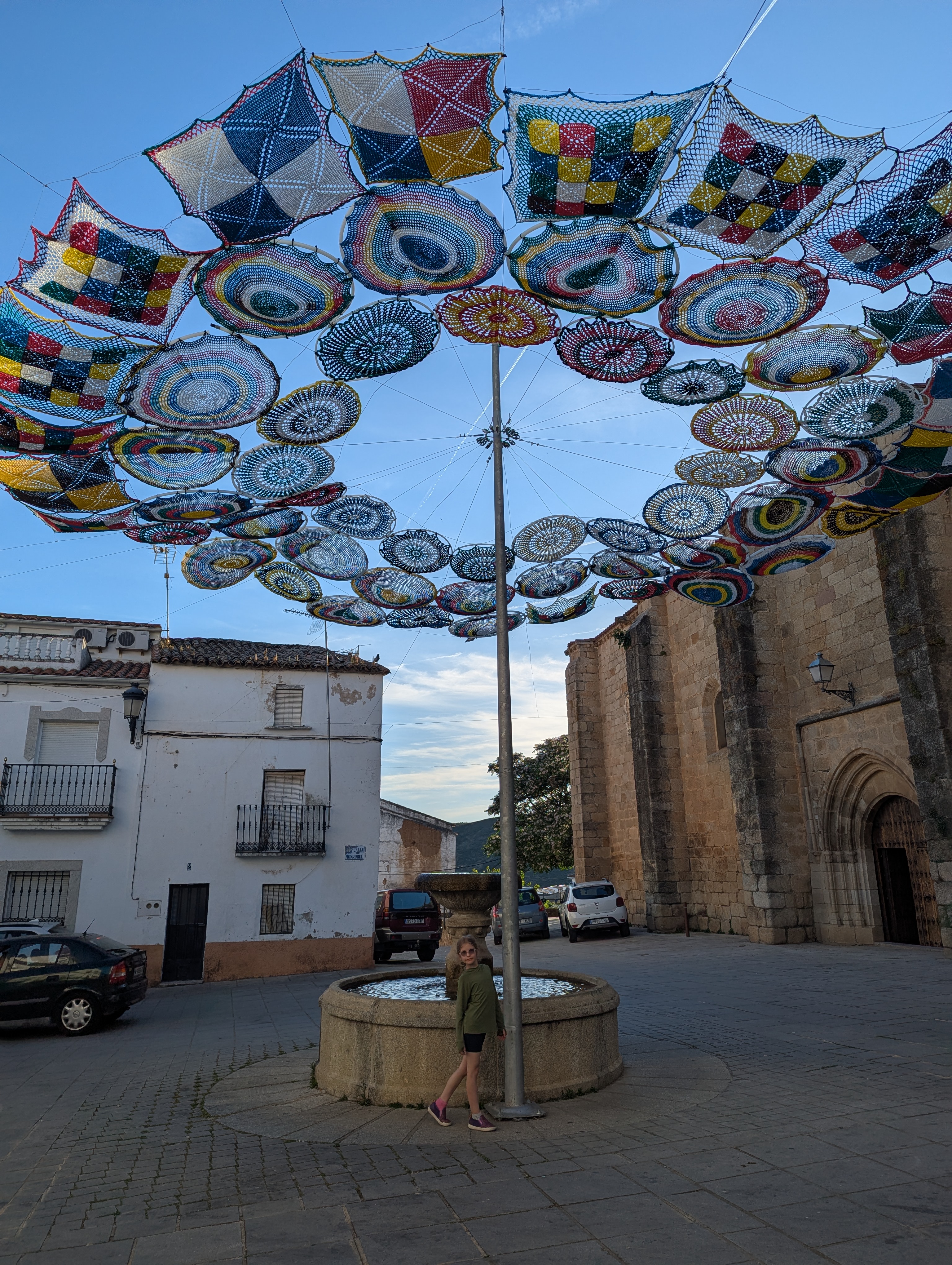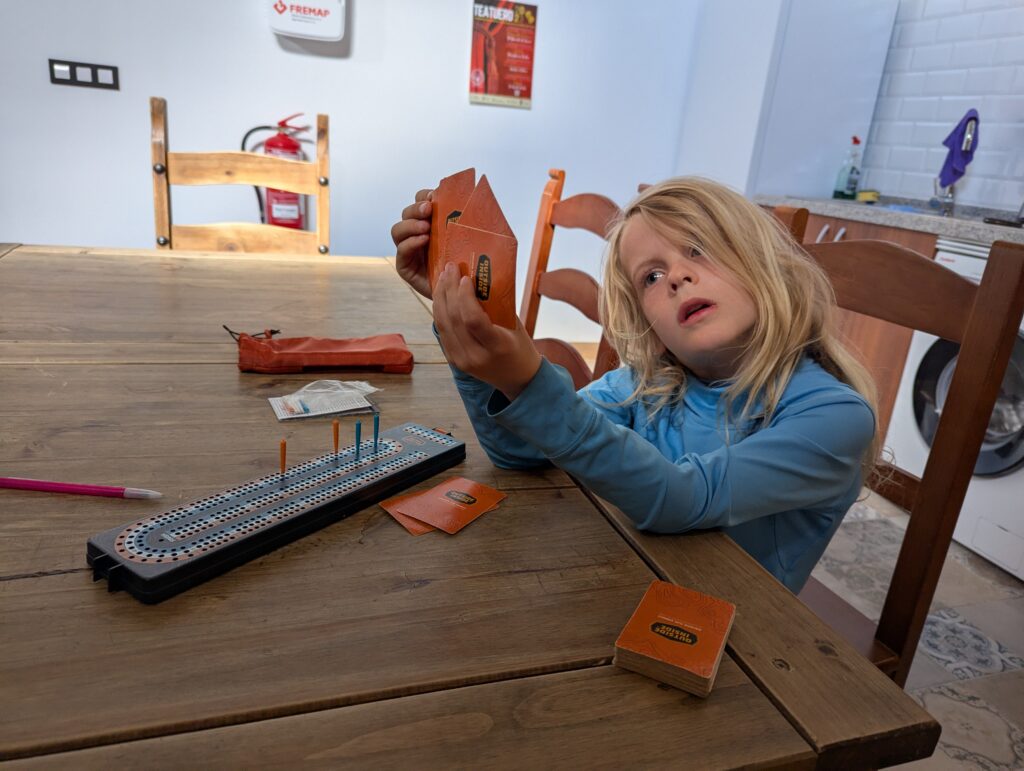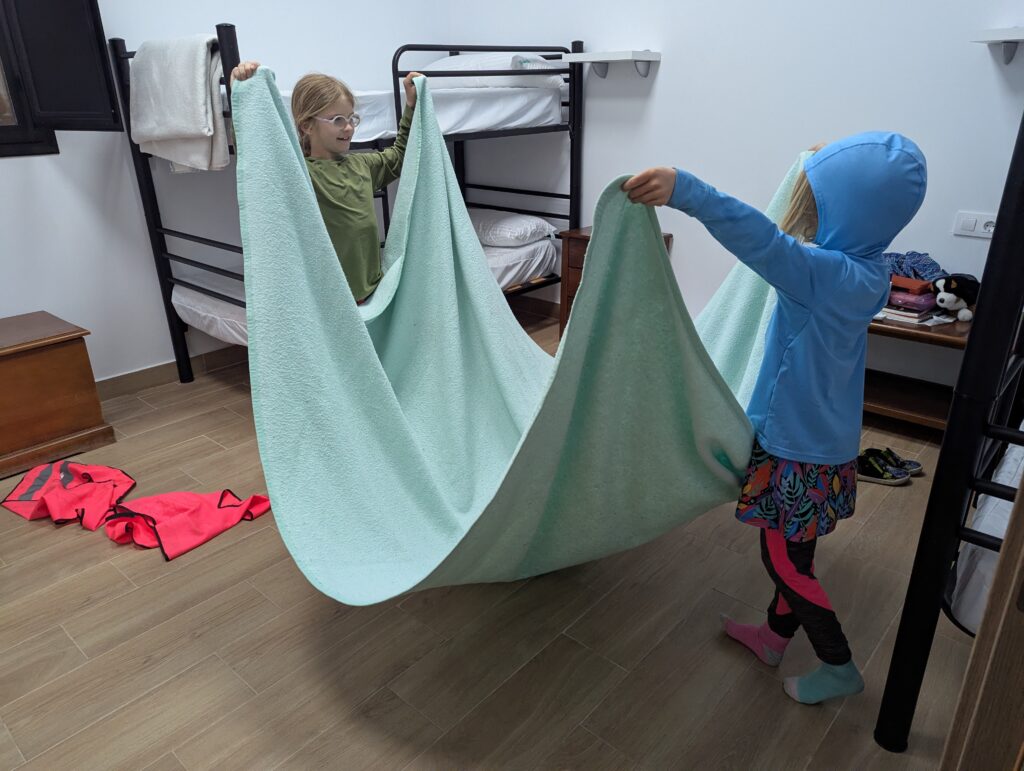In this entry we continue to enjoy the mountains before descending into the plains around Salamanca for a rest day. We do some lovely off-road riding along a Roman road, stay in a giant hostel with communal meals, and have a misadventure finding lodging in Salamanca.
Day 11: Baños de Montemayor to Fuenterobles (35km)
Leaving Baños involved a well-graded climb up and over the mountain pass and into the next drainage. We could see snow-covered mountains and for many miles afterwards we enjoyed looking back and watching the mountains slowly recede. After finishing the climb we chose to join the walkers on a dirt track that went steeply down into a valley.
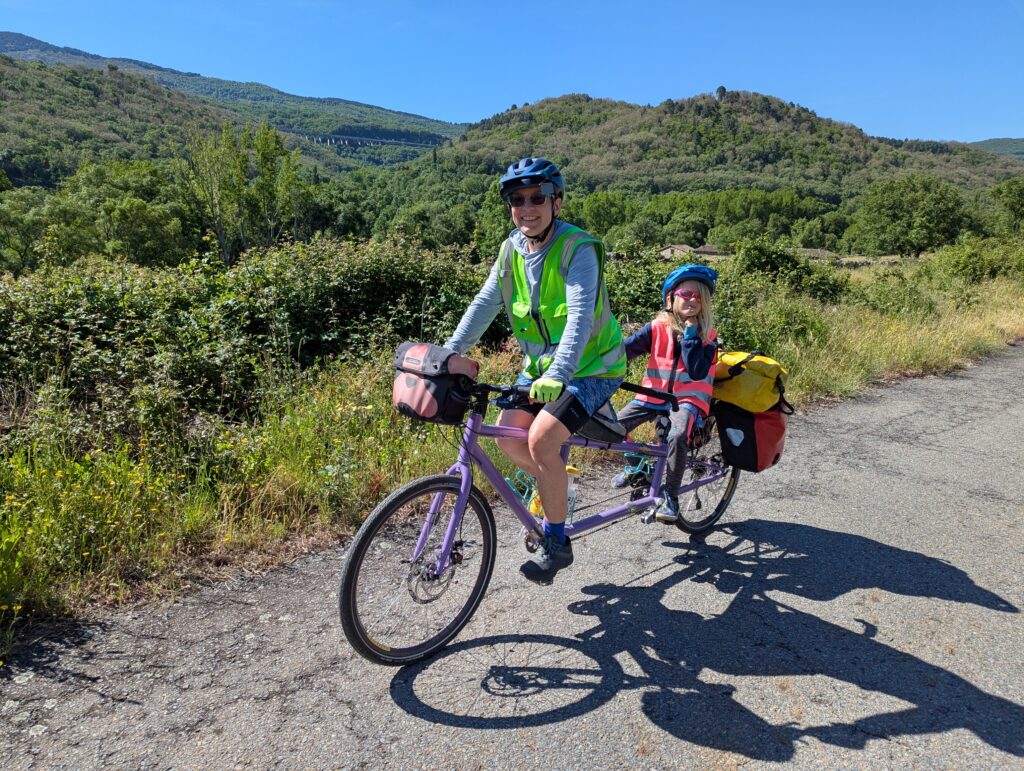
For lunch we stopped at a small bar, where the owner was so charmed by our girls that he flagged down a friend riding by on a horse. They offered to let the girls take a short little pony ride around the square, joking that maybe they’d trade the bicycles for horses. H said she’d make the trade, and A said no way.
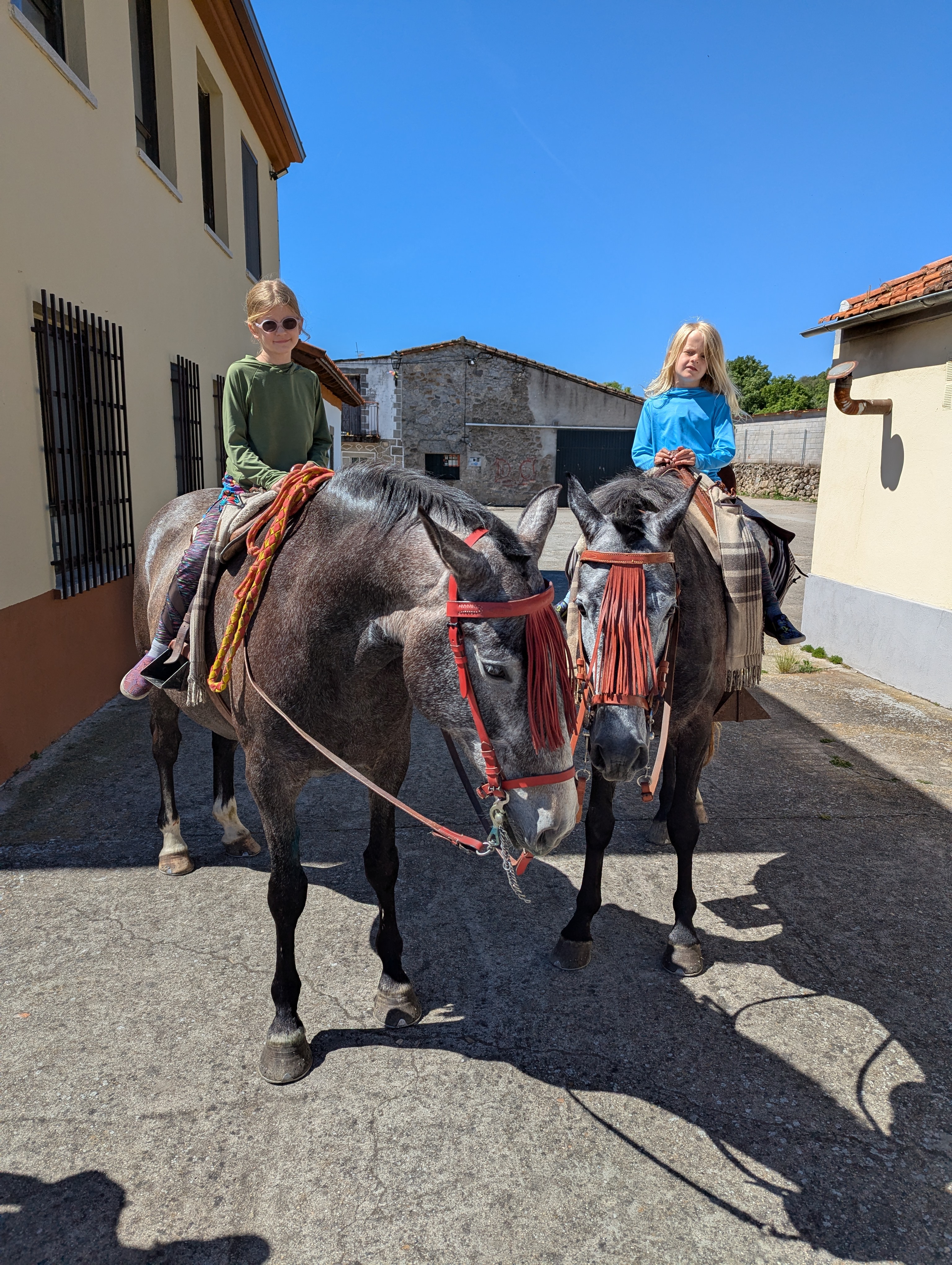
We continued on a dirt track through farmland and open fields. Along the track were Roman mile markers. The girls were inspired to learn about Roman numerals, and that night ended up doing Roman numeral math problems!
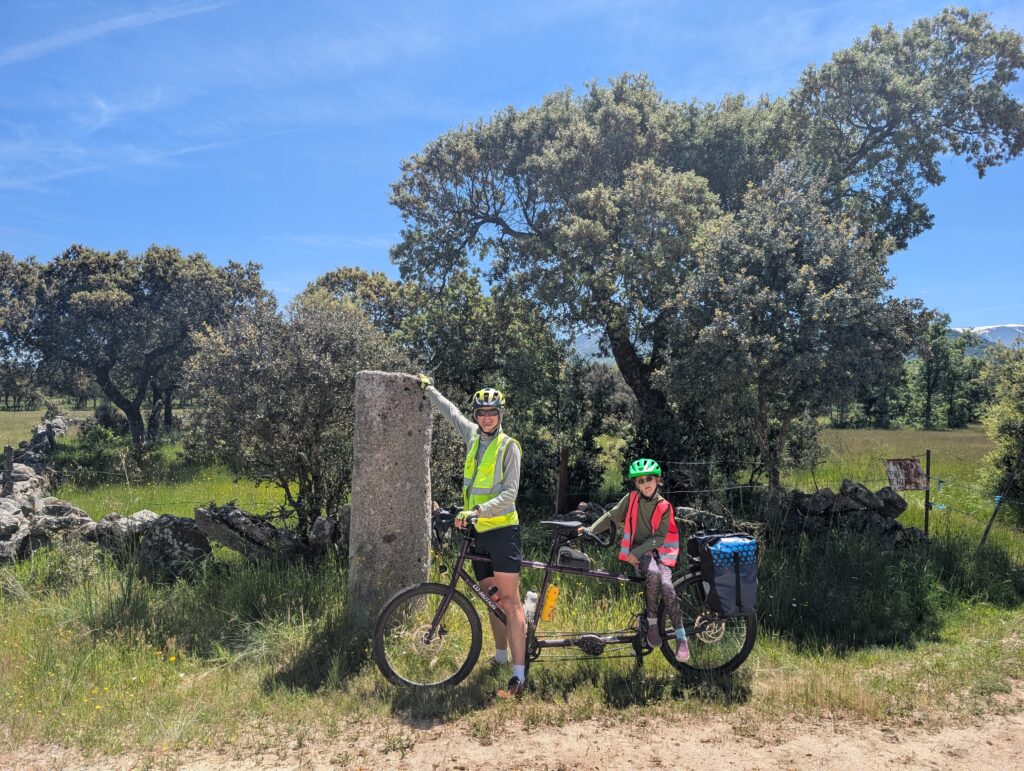
We rolled into the tiny town of Fuenterobles prepared to share a bunkroom with a bunch of hikers in a pilgrim’s hostel that is famous for offering hospitality to travelers. We were delighted to find that they had a four-bed room we could have for just our family. Hilariously it was called the American Room in honor of pilgrims from the US. I guess it was meant to be.

At 8:30 there was a communal pilgrim’s dinner and we ate with about 20 other people walking on this route. Everyone was friendly and they seemed delighted to have kids around. The host gave them extra olive oil on their fish. The girls were overwhelmed with all the attention, but when dinner was finaly done well after 9pm they were quickly asleep.
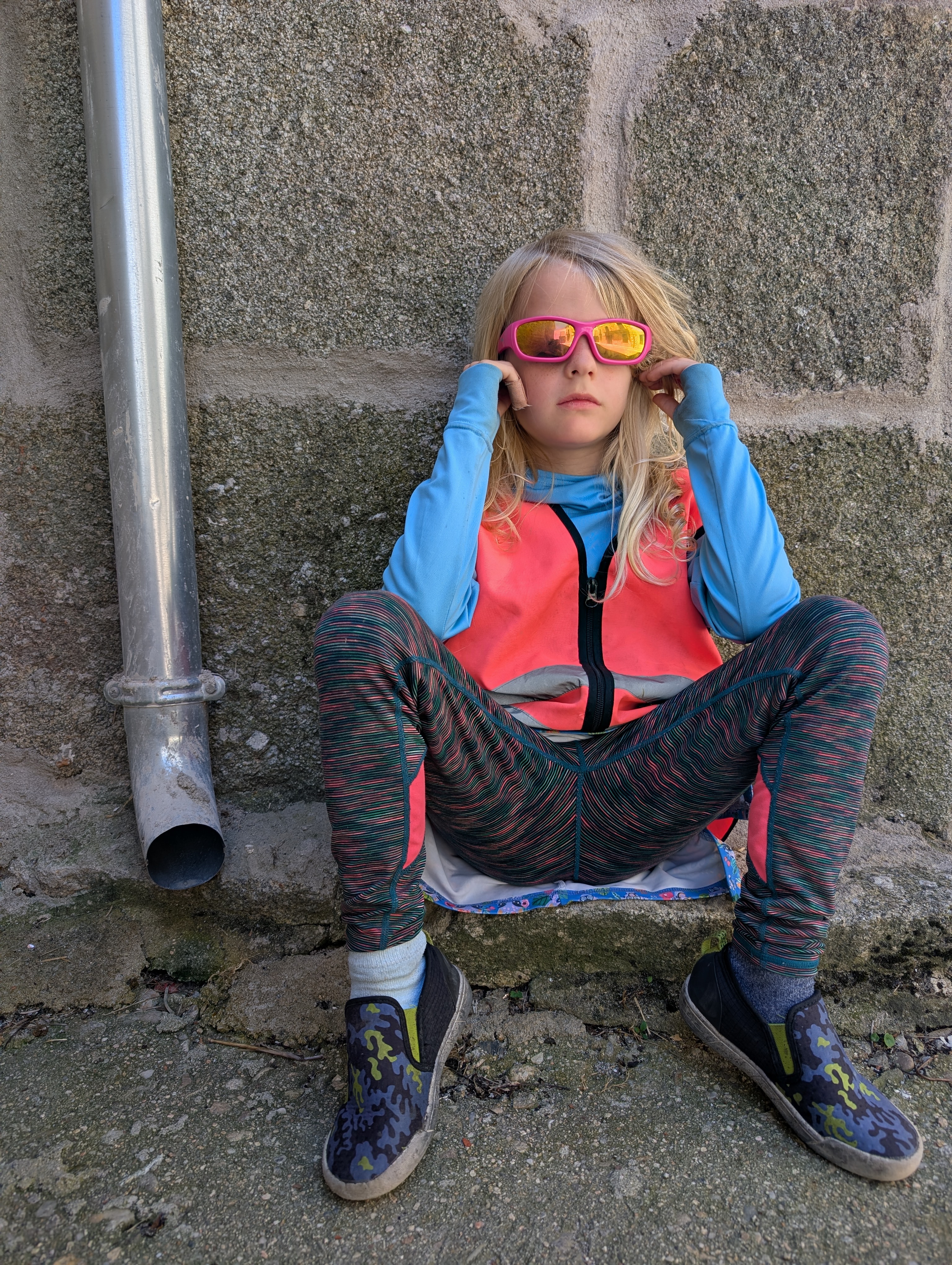
Day 12: Fuenterobles to Salamanca (51km)
We were the last of the pilgrims to leave the hostel, since no one in our bunk room was interested in waking up early! Back on the dirt track we took a turn to get back to the road sooner. It went through several cow pastures requiring opening and closing gates. At each one we held our breath, praying it wouldn’t be locked… and none were! We made it to the next town of Frades de la Sierra without incident.
As we rolled into a town a man called out to welcome us to his grain mill museum. Mind you, this was a random, tiny town in the middle of nowhere. We said yes. He welcomed us into the grain mill owned by his family for three generations. He showed us pictures of his parents and grandparents, explained how they got the machinery, and also how it worked. They used a steam engine to power it! All the farmers from the surrounding areas would bring their wheat to be ground. Jason would like to add that the mill shook the building so hard that the roof was reinforced with extra wood beams and suspension heists.
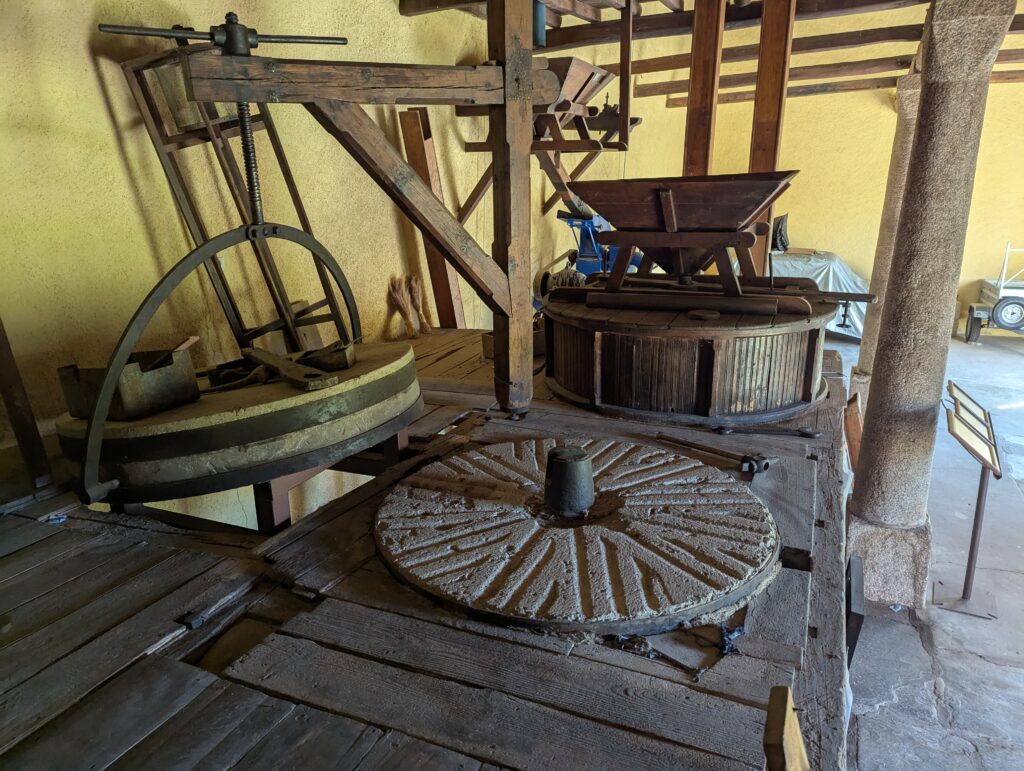
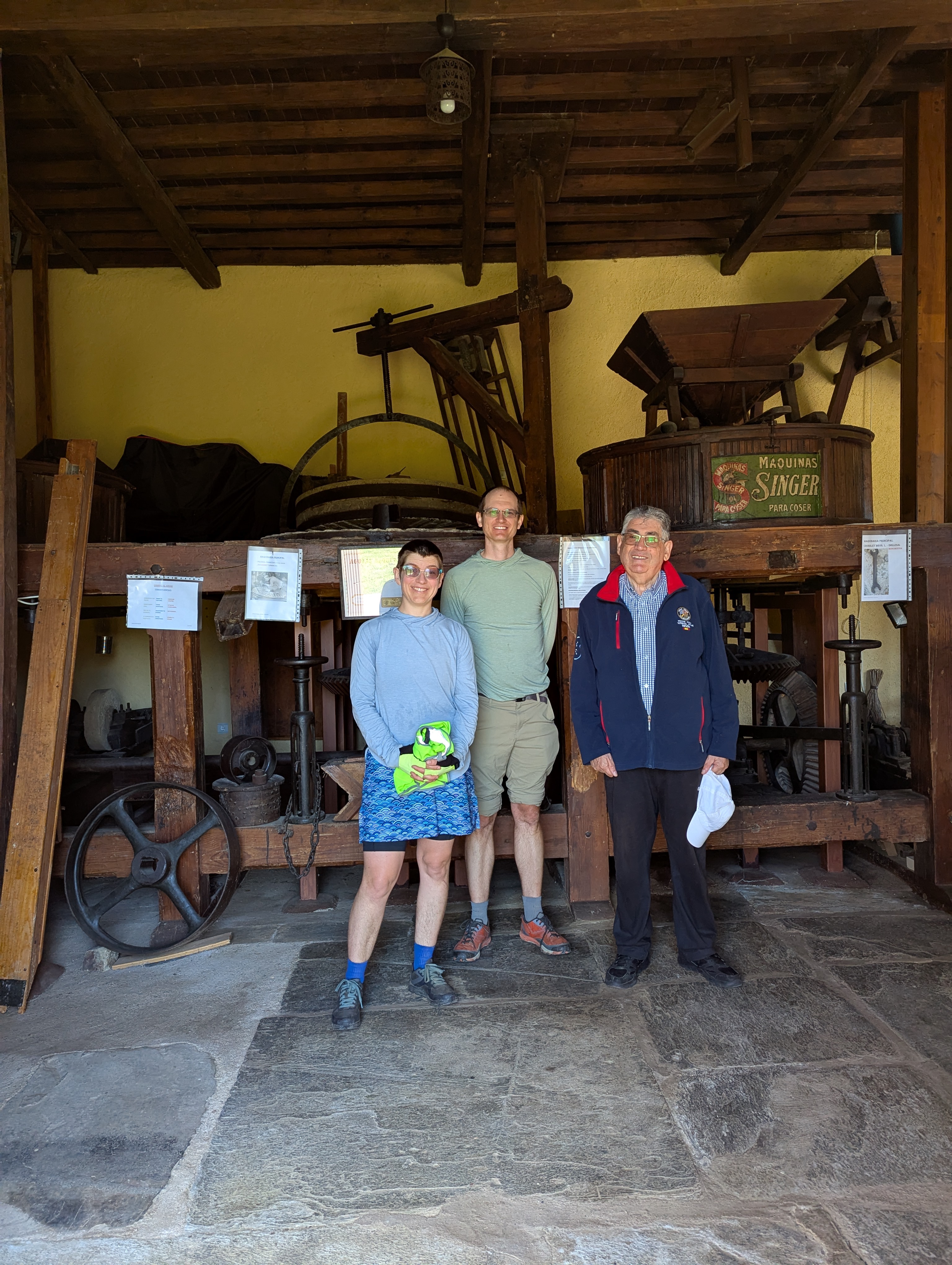
The ride into Salamanca was uneventful. Usually entering a big city is stressful with traffic, but we got on a separated bike path that delivered us right downtown without incident. Once there the historical area was packed. We walked to the hostel where we had reserved rooms, but found that it was in fact impossible to get the bicycles into the bicycle storage area. Actually, the storage area was a small corner in a stairwell that was already full.
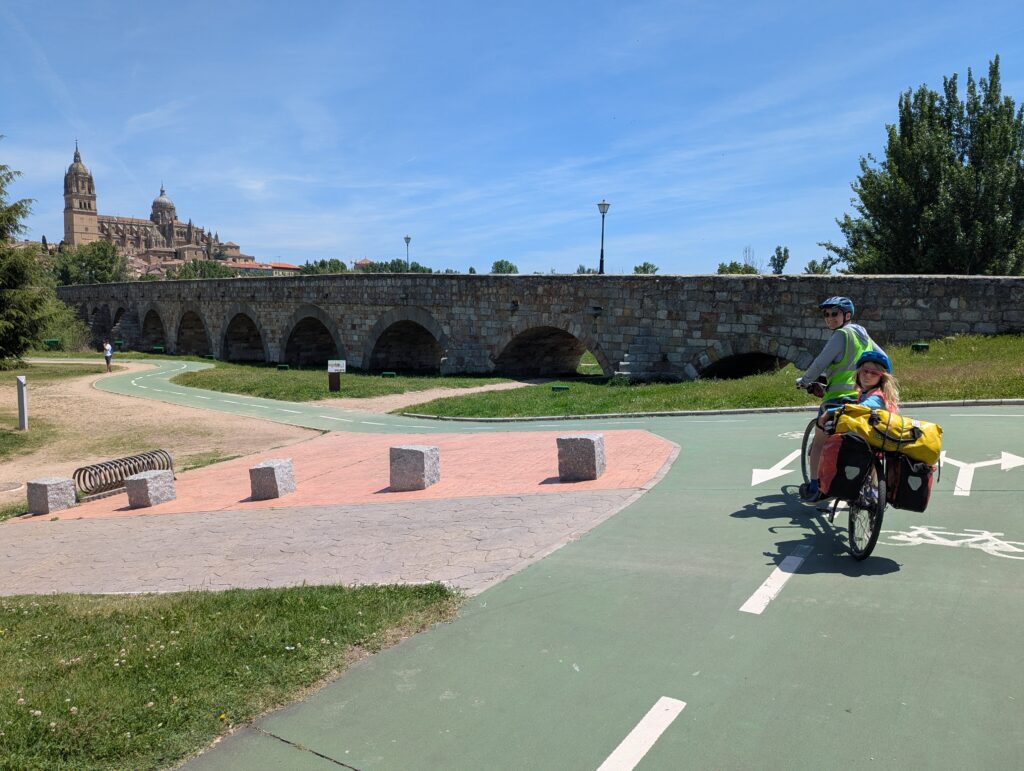
We quickly scrambled to find new lodging and leave the old one. For only about $15 more than the crowded hostel we rented a two-bedroom apartment just on the outside of the historical area. It turned out to be a great decision.
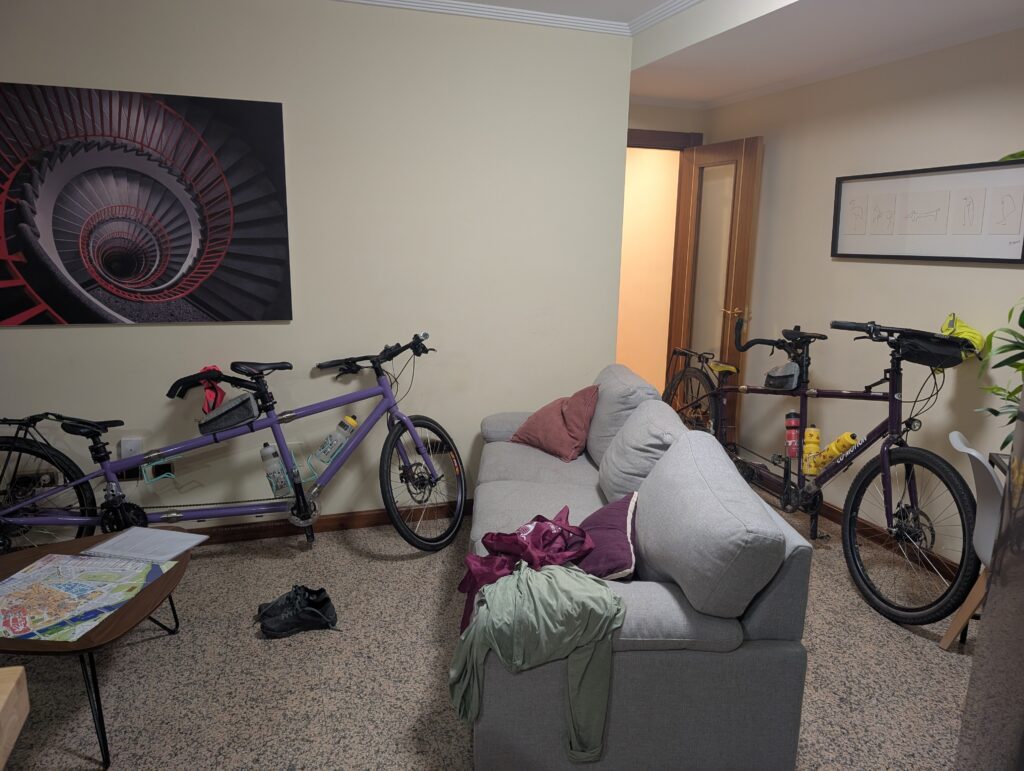
Day 13: Rest in Salamanca (0km)
We were all happy to have another true zero day. We slept in, ate Argentine Empanadas, and did a small amount of traditional tourism. If I’m being honest though, we mainly sat around and ate. Jason and I took a walk to a big grocery store and ended up with a LOT of food.

